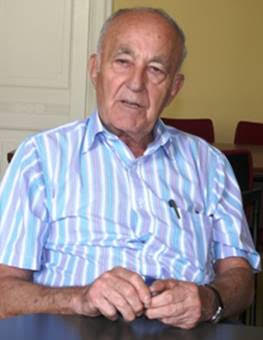
THE VOICE OF INTERNATIONAL LITHUANIA
|
VilNews has its own Google archive! Type a word in the above search box to find any article.
You can also follow us on Facebook. We have two different pages. Click to open and join.
|
Archive for January, 2012
- Posted by - (0) Comment
Lithuania’s Defense Minister Rasa Jukneviciene in meeting with U.S. Defense Secretary Leon Panetta:

Russia increases military activity along Lithuania’s borders, implements military reform, arranges more military training events, and carries out militarization process in the Kaliningrad Oblast. The regime in Lithuania’s neighbourhood becomes more and more autocratic and oligarchic.

The destroyer ‘Nastoychivy’, one of many in Russia’s huge ‘Baltic Fleet’.
During her visit in Chicago last week Lithuanian Minister of National Defence Rasa Jukneviciene attended a round-table discussion with members of the Chicago Council on Global Affairs (CCGA), met with representatives of the Chicago’s Lithuanian Community, honored the tomb of Gen P. Plechavicius and the memory of pilots S. Darius and S. Girenas, Lithuania’s Ministry of Defence reports.
In a discussion with the CCGA representatives Lithuanian Minister stated that despite the essential changes NATO has undergone during the latter 20 years, the Alliance remains the vital guarantee for Lithuania’s security.
“The Chicago NATO Summit in May will be of utmost importance to Lithuania. Lithuania anticipates positive decisions regarding the extension of the Air Policing mission, accreditation of the Energy Security Centre and NATO missile defence system”, she said.
R. Jukneviciene also remarked she expected an even more intense role of NATO and USA in the Baltic Region due to the region-specific security environment.
“Russia continually increases military activity along Lithuania’s borders, implements military reform, arranges more military training events, and carries out militarization process in the Kaliningrad Oblast,” Lithuanian Minister said. ”The regime in Lithuania’s neighborhood becomes more and more autocratic and oligarchic.”
- Bookmark :
- Digg
- del.icio.us
- Stumbleupon
- Redit it
- Posted by - (0) Comment
![]()


![]()
EUROPE – MY HOME & MY CASTLE (3 of 10)
Along the Riviera
|
We have started our little tour of Europe. Over the next few weeks you are all invited on a journey from north to south, from east to west. Some articles will dwell with history. Some with Lithuanian contact points in various countries. I have travelled across Europe with camera and notepad for nearly 40 years and hope you will enjoy seeing and reading about some of my experiences. We start today's tour in Liguria, Italy, through France’s Cotes d’Azur to the south-east of Spain. Have a nice trip!
Text and photos: Aage Myhre To read today’s travel report, click HERE To read the previous articles, go to our SECTION 11 |
- Bookmark :
- Digg
- del.icio.us
- Stumbleupon
- Redit it
- Posted by - (2) Comment
![]()


![]()
EUROPE – MY HOME & MY CASTLE (3 of 10)
Along the Riviera
We have started our little tour of Europe.
Text and photos: Aage Myhre
|
Portovenere

Portovenere is a hidden treasure tucked away in the north-western area of Italy, one of my favourite Mediterranean towns, dating back to at least the middle of the first century. The ancient town is a hidden treasure for tourists and even residents of Italy to discover. When people first hear of Portovenere, the natural comparison is matched against the world renowned Portofino, but when visited, the two places are completely different. In fact, it can be said that Portovenere is a much more inspiring experience because of the breathtaking landscape that has been naturally architected by mother nature and mankind together over time, which is rich history. The town, or “comune” as referred to by the Italian government, is located on the provincial coast of La Spezia, in the region of Liguria. Rocky horizons, lush forests and vegetation, completed with bodies of water supplied by the Mediterranean Sea, surround this area.
We start our Riviera trip here. But first we enjoy a wonderful filletto with a rich, deep red Barbera on the boardwalk Restaurant above. At the very waterfront. Fantastic!
The next day the tour starts, along the Italian Riviera and the French Cote d'Azur. We travel to France's best preserved medieval town, not far from the Spanish border, Carcassonne! Phenomenal dinner, good Languedoc wines. Next morning, we go to the village of Mary Magdalene and The Holy Grail. Later that day we pass the Pyrenees. After a few hours’ drive of ever new mountain pass, Paradise opens before us when we arrive at Spain’s Costa Blanca, the White Coast. And down there, below us, the the Mediterranean Sea in all its azure-blue splendour.
|
|
Liguria
|
Liguria is a coastal region of north-western Italy, the third smallest of the Italian regions. Its capital is Genoa. It is a popular region with tourists for its beautiful beaches, picturesque little towns, and good food. Liguria borders France to the west, Piedmont to the north, and Emilia-Romagna and Tuscany to the east. It lies on the Ligurian Sea. The narrow strip of land is bordered by the sea, the Alps and the Apennines mountains. Some mountains rise above 2000 m; the watershed line runs at an average altitude of about 1000 m. The winding arched extension goes from Ventimiglia to La Spezia and is one of the smallest regions in Italy. Liguria is just 5,422 square kilometres, or 1.18% of all of Italy. Of this, 3524.08 kilometres are mountainous (65% of the total) and 891.95 square kilometres are hills (35% of the total). Liguria's Natural Reserves cover 12% of the entire region, or 60,000 hectares of land. They are made up of one National Reserve, six large parks, two smaller parks and three nature reserves.

The Cinque Terre is a rugged portion of coast on the Italian Riviera. It is in the Liguria region of Italy, to the west of the city of La Spezia. "The Five Lands" is composed of five villages: Monterosso al Mare, Vernazza, Corniglia, Manarola, and Riomaggiore. Photo: http://www.dycnic.com
Genoa (Genova in Italian)
Money flowed into the Ligurian port city made famous by Columbus and now it's a better place than ever to visit. Genoa has a fascinating aquarium, an interesting port, and a historic center said to be the largest medieval quarter in Europe, with a wealth of churches, palaces, and museums. In 2006, Genoa's Rolli Palaces were added to the list of UNESCO World Heritage Sites. Genoa is famous for pesto (basil, pine nuts, garlic, and parmigiano cheese) usually served overtrenette or trofia pasta cooked with potatoes and green beans. Being a port city, Genoa also has some good seafood dishes such as the fish stewburidda.
Genoa is Italy's principal seaport and is located on the northwest coast of Italy in the region of Liguria, not far from the French border.

Piazza de Ferrari, Genoa.
|
Was Christopher Columbus from Genoa or from Lithuania?
Will Lithuanians be able to add another page to their already epic history? Will the National Lithuanian American Hall of Fame (NLAHF) have yet one more candidate for induction? Daine Jablonskyte-Marquez and Jon Platakis, members of the NLAHF, tracked down historian Manuel Rosa at his job at Duke University, to enlighten us on his 20 plus years of research into the identity of Christopher Columbus. Confidently, and with primary source documents to verify his assertions, Rosa states, “Columbus was a royal prince, son of a Portuguese noble lady and exiled King Wladyslaw III (a direct descendent of one of Europe’s greatest ruling dynasties, Lithuania’s Gedeminian dynasty). He was hiding his identity from the public at large but the courts of Europe knew who he was.” Pointing to documentation in his new book, COLON. La Historia Nunca Contada (COLUMBUS. The Untold Story) recently published in Spain, and to be published May 2012 in Poland, that Columbus’ marriage in 1479 to a Portuguese noblewoman, who was a member of the Portuguese military order of Santiago, required the approval of the King of Portugal, a procedure reserved only for someone of major importance. “This new Portuguese document alone,” stated Rosa, “makes the entirety of Columbus’ Italian history false.” Rosa’s evidence appears irrefutable that Columbus, who had been housed in the palaces of the nobility, had access to royal courts, and married into nobility, could not be, as our history books tell us, the son of a poor weaver from Genoa. So, who was Christopher Columbus, if not a poor weaver’s son from Genoa? Rosa believes that his true identity was Prince Segismundo Henriques which was concealed in order to protect his father. All of Rosa’s evidence points to Wladyslaw III, king of Poland and Lithuania as being the father of Christopher Columbus. Rosa suggests that there is proof the king survived the Battle of Varna in 1444 against the Ottomans and lived in exile on the island of Madeira under the name of “Henrique the German,” married to a Portuguese noblewoman. Is this just another nutty conspiracy theory? Not according to leading historians based at the University of Lisbon, and St. Joseph’s University. Rosa utilized medieval documents and chronicles from multiple kingdoms to cross-reference historical events and personalities, plus ancient genealogy and heraldry. In addition, Rosa’s mastery of Spanish, Italian, and Portuguese, allowed him a more accurate interpretation of these primary source documents. Members of the National Lithuanian American Hall of Fame, lament the fact that there seems to be little interest from American, and our own Lithuanian historians and researchers, to either accept or contradict Rosa’s findings. According to Rosa, he has not yet had any success in finding a U.S. publisher for this history altering book. It appears a certainty that Christopher Columbus was not the poor weaver’s son from Genoa. However, in the near future, it is hoped that Polish authorities will open the tomb of King Wladyslaw II, (Jogaila) the Lithuanian King of Poland, to obtain DNA evidence to prove that Christopher Columbus is a son of Lithuania who hid his royal lineage to protect the secret that his father had survived the Battle of Varna. Read more in VilNews: https://vilnews.com/?page_id=150
|
Ventimiglia
|
Ventimiglia is located on the Italian side, a few kilometers from the border with France, in the province of Imperia. It is divided into two zones: the upper part, medieval, perched right on the river Roia, and the lower part located, between the Roia and the Nervia, on the flat part of the coast. The old centre rises in an imposing position and is easily distinguished for all corners of the plain. The urban structure is characterized by the presence of several clusters of houses, which are built one to each other according to the different time frames of construction: Like in most of the centers of Liguria, due to the lack of space, the houses grow in height. The irregular arrangement of buildings, arches, canopies and religious shrines create always different angles and do not leave space for monotony. |
|
|
|
Monaco
|

The Monte Carlo Casino.
Photo: Wikipedia.
We have come to Monaco, officially the Principality of Monaco, a sovereign city state on the French Riviera. It is bordered on three sides by its neighbour, France, and its centre is about 16 km (9.9 mi) from Italy. Its area is 1.98 km2 (0.76 sq mi) with a population of 35,986 as of 2011 and is the most densely populated country in the world. Monaco boasts the world's highest GDP nominal per capita at $151,630. Monaco also has the world's highest life expectancy at almost 90 years (CIA estimate, 2011), and the lowest unemployment rate at 0%, with about 40,000 workers who commute from France and Italy each day. After a recent expansion of Port Hercule, Monaco's total area is 2.05 km2 (0.79 sq mi), with new plans to extend the district of Fontvieille, with land reclaimed from the Mediterranean Sea.
Monaco is a principality governed under a form of constitutional monarchy, with Prince Albert II as head of state. The House of Grimaldi has ruled Monaco, with brief interruptions, since 1297.[8] The state's sovereignty was officially recognized by the Franco-Monegasque Treaty of 1861. Despite Monaco's independence and separate foreign policy, its defence is the responsibility of France.
Citizens of Monaco are called Monacans, while Monegasque is the proper term for describing someone who was born in Monaco.
Le Grand Casino de Monte Carlo opened in 1858, and the casino benefited from the tourist traffic the newly built French railway system created. Due to the combination of the casino and the railroads, Monaco finally recovered from the previous half century of economic slump, and the principality's success attracted other businesses. In the years following the casino's opening Monaco founded its Oceanographic Museum and the Monte Carlo Opera House, 46 hotels sprang up and the number of jewellers operating in Monaco increased by nearly 500 percent. By 1869, the casino was making such a vast sum of money that the principality could afford not to collect tax from the Monegasques; a master stroke that was to attract affluent residents from all over Europe.
Today, Société des bains de mer de Monaco which owns Le Grand Casino still operates in the original building the Blancs constructed and has been joined by several other casinos, including Le Casino Café de Paris, the Monte Carlo Bay Casino, the Monte Carlo Sporting Club & Casino (Summer Casino) and the Sun Casino. The most recent addition to the list—the first casino to open in Monte Carlo in 75 years—is the Monte Carlo Bay Casino, which sits on 4 hectares of the Mediterranean Garden and, among other things, offers 145 slot machines.
|
|
Provence |
|
|
|

Provence is the south eastern region of France on the Mediterranean adjacent to Italy. It is part of the administrative région of Provence-Alpes-Côte d'Azur. The traditional region of Provence comprises the départements of Var, Vaucluse, Bouches-du-Rhône, Alpes-de-Haute-Provence, Alpes-Maritimes and parts of Hautes-Alpes. The Romans formed this region into their Gallia Transalpina, the first Roman provincia outside the Alps. From thus, it derives its name today.
From the Alpine mountains down to the sand beaches of Saint Tropez, Cannes, Nice, the region is an important destination for tourist offering a favorable climate all year round. Perfumes, rosé wines, jazz and a distinct cuisine, the region has a rich culture, traditions and festivals. The Cannes Film festival, Nice Carnival and the Jazz festival are just a few of the highlights.
Nice

Photo: Wikipedia.
Nice is the fifth most populous city in France, after Paris, Marseille, Lyon and Toulouse, with a population of 348,721 within its administrative limits on a land area of 71.92 km2 (28 sq mi). The urban area of Nice extends beyond the administrative city limits with a population of more than 955,000 on an area of 721 km2 (278 sq mi). Located on the south east coast of France on the Mediterranean Sea, Nice is the second-largest French city on the Mediterranean coast. The city is called Nice la Belle (Nissa La Bella in Niçard), which means Nice the Beautiful, which is also the title of the unofficial anthem of Nice, written by Menica Rondelly in 1912. Nice is the capital of the Alpes Maritimes département and the second biggest city of the Provence-Alpes-Côte d'Azur region after Marseille. The area of today’s Nice is believed to be among the oldest human settlements in Europe. One of the archaeological sites, Terra Amata, displays evidence of a very early use of fire. Around 350 BC, Greeks of Marseille founded a permanent settlement and called it Nikaia, after Nike, the goddess of victory.
Grasse – the world’s perfume capital


Let me suggest that you drive a bit inland after Nice. Go to Grasse, a commune in the Alpes-Maritimes department, a town considered the world's capital of perfume. It obtained two flowers in the Concours des villes et villages fleuris contest and was made "Ville d'Art et d'Histoire" (town of art and history).
The Lithuanian-born designer Juozas Statkevicius, now based in Paris, has been designing fashions and theatre costumes since the 1990s, but first came to international attention after showing a perfume collection in Paris in 2002. His first perfume, titled simply Juozas Statkevicius Eau de Parfum, was launched in 2004.
Cannes

Photo: Wikipedia.
Cannes is one of the best-known cities of the French Riviera, a busy tourist destination and host of the annual Cannes Film Festival. It is a Commune of France in the Alpes-Maritimes department. The city is also famous for its various luxury shops, restaurants, and hotels. This Riviera city on the Cote d'Azur hosts Europe's most famous annual Film Festival, and has long been a playground for sophisticated pleasure seekers. Cannes is noted for beautiful sandy beaches, most of which charge an entry fee to keep out the riff-raft. It's a far cry from the early 19th century, when this was a small fishing and agricultural village. But then the place was discovered by the aristocracy, who built exclusive holiday villas, and it was only a matter of time before Cannes became a seriously classy resort.
Saint-Tropez
|
|
|
|
Saint-Tropez is located on the French Riviera, west of Cannes, and is known today for its famous and extremely wealthy summertime guests. It has been dubbed the 'playground to jetsetters, fashion models, and millionaires', and it is most-enduringly known as the place where the iconic Brigitte Bardot was "discovered" and for its role in the liberation of southern France during World War II. Topless sunbathing is now a usual way for both men and women, from Pampelonne beaches to yachts in the centre of Saint-Tropez port. The Tahiti beach is "clothing-optional", but also nudists are going to private nudist lands, like that in Cap d' Agde. "Modest" clothing is basically seen in Saint-Tropez, because of the end of "illegal taste-era" and stars (but not everyone), that don't want their nude photos, made available next day on colour magazines, by paparazzi. |
Avignon
|
|
Let me suggest that you go a bit inland again, after the luxurious, expensive experiences you had in Saint-Tropez...
Let’s go to Avignon at the bank of the Rhône River, often referred to as the "City of Popes" because of the presence of popes and antipopes from 1309 to 1423 during the Catholic schism, it is currently the largest city and capital of the département of Vaucluse. This is one of the few French cities to have preserved its ramparts, its historic centre, the palace of the popes, Rocher des Doms, and the bridge of Avignon. It was classified a World Heritage Site by UNESCO under the criteria I, II and IV.
The bridge of Avignon, which today is only a half-bridge, has achieved worldwide fame through its commemoration by the song "Sur le pont d'Avignon" ("On the bridge of Avignon"). It goes as follows:
|
|
Languedoc-Roussillon
|

Cathedral of Saint-Nazaire Languedoc-Roussillon.
Photo: http://www.citypictures.org
Languedoc-Roussillon is one of the 27 regions of France. It comprises five departments, and borders the other French regions of Provence-Alpes-Côte d'Azur, Rhône-Alpes, Auvergne, Midi-Pyrénées on the one side, and Spain, Andorra and the Mediterranean sea on the other side.
This region was one of the earliest to be inhabited by humans and, located between the Atlantic Ocean and the Mediterranean, was an extremely important trade route and passage.
The Roman history of Languedoc-Roussillon is long and has left some spectacular traces. The names of towns, the Catalan language, the region’s heady wines and olive-oil dishes all testify to the lasting influence of 400 years of occupation. It is also where the Romanesque art emerged in the early 11th C in its most impressive way ranging from little churches to large, important Cistercian abbeys. This is also a region where the “Cathars”, named after the Greek “katharos” or “pure”, fought the Catholic church of the time in the 13th C; it took many decades to exterminate this movement whose followers believed the visible world to be the work of the devil. Nowadays, many impressive fortresses perched on dizzying heights and the ancient villages still bear witness to a lost religion.
Sète – the Venice of France

Known as the Venice of Languedoc and the singular island (in Paul Valéry's words), it is a port and a sea-side resort on the Mediterranean Sea with its own very strong cultural identity, traditions, cuisine and dialect. It is also the hometown of artists like Paul Valéry, Jean Vilar and Georges Brassens.
Narbonne
|
|
Narbonne is a charming small city in the Languedoc, with wonderful historic attractions as well as a relaxing beach along the Mediterranean. Until I came to Lithuania I thought this was the city in the world with the most beautiful girls. The heart of Narbonne, once a key port for the Roman Empire, is the dramatic Place de l'Hôtel de Ville. Also be sure to stroll through the village’s old town, where you can’t miss the main attraction: Cathedrale Saint-Just. The most dominant building in this neighbourhood, the 13th century church connects to the Palais des Archevêques, which has an ornately carved 130-meter keep. Narbonne lives up to its part in the deal. The weather never ceases to be perfectly cloudless with good, hot temperatures hovering around 90 to 95 Fahrenheit, (32 to 38 Celsius), low humidity and lots of boisterous, fragrant restaurants serving up mussels steamed in white wine, paella, platters of shellfish on ice, and gallons of chilled wines. |
|
Carcassonne - a genuine Medieval City |
|
|
Photo: Wikipedia.
We drive from Languedoc's Riviera to France's best preserved medieval town, not far from the Spanish border. Carcassonne! Phenomenal dinner, good Languedoc wines. Paté of crispy roasted toasts for a starter, quails as main course. Castle towns around Europe are fantastic. The story lives around us Europeans. We are lucky to live and experience such as this...
No matter which direction you are coming from, you can’t miss the imposing silhouette of the City of Carcassonne which is encircled by a huge double row of fortified walls that run almost 2 miles long, accentuated by 56 watchtowers. During the 9th and 10th centuries B.C., the village of Carcas was already a very large and active agglomeration, about a mile south of Carcassonne. Its inhabitants migrated to the present location of Carcassonne around 600 B.C. At that time, the common way to protect a city was to dig a large moat and build a very tall reinforced wood fence all around it. The 3rd century A.D. was a particularly unstable period that saw incessant Barbarian invasions. This is when Carcassonne decided to update its defense mechanisms and solidify its ramparts, building the fortified walls that we can still admire today. Rattled by another period of invasions and insecurity, the inhabitants built a second exterior wall around 1230. It took several thousand soldiers to protect the city back then. The 2000-year-old city of Carcassonne still stands today as the most successful achievement in military architecture of that time in Europe. Nothing has really changed since the 13th century, and if you find yourself in the south of France, you should not miss the chance to be carried back to the heart of the Middle Ages and feel the magic of its glorious past.
|
|
Who were the Cathars? The Cathars were an integral part of Carcassonne history. Catharism was a very active religion in Europe and especially in the area around Carcassonne. The middle of the 12th century was a prosperous period of French history, as well as one of great religious tolerance when Jews, Catholics and Cathars all lived in harmony. Cathars were Christians, but unlike the Roman Catholics, they believed that God had only created spiritual perfection and eternity, not the material world that they saw as the Devil’s creation. Therefore, they led very austere lives, refusing any earthly pleasure. They did not eat any fancy food such as meat. Sex and wealth were banned. |
|
Jesus, Mary Magdalene, the ‘Da Vinci Code’, a village in Languedoc,
The village Rennes le Château, 45 km south of Carcassonne, should definitely be part of your Riviera trail. Explore the village and its church which is dedicated to Mary Magdalene and shrouded in mystery. Followers of the Da Vinci code will be fascinated by the history surrounding the whole of this area. Here, many believe, Mary Magdalene came after the death of Christ. And because of her influence, a whole order of fighting men, known as the Knights Templar, were created. In The Holy Blood and the Holy Grail, a book by Michael Baigent, Richard Leigh, and Henry Lincoln from 1982, the authors put forward a hypothesis, that the historical Jesus married Mary Magdalene, had one or more children, and that those children or their descendants emigrated to what is now southern France. Once there, they intermarried with the noble families that would eventually become the Merovingian dynasty, whose special claim to the throne of France is championed today by a secret society called the Priory of Sion. They concluded that the legendary Holy Grail is simultaneously the womb of saint Mary Magdalene and the sacred royal bloodline she gave birth to. The 2003 conspiracy fiction novel The Da Vinci Code by Dan Brown makes reference to this book, also liberally using most of the above claims as key plot elements. Wherever Mary traveled in France, she taught the skill of healing with oils. Few people realize the wisdom that the Magdalene presented to the world in the development of the use of essential oils. She was the mystical woman that anointed Jesus' feet. This demonstrates her skill in the use of essential oils. Biblical references to Mary Magdalene include information that she was one of the women who accompanied Jesus after he healed her of possession by several demons (Luke 8:2, and Mark 16:9). She is also reported to have been one of the women at the foot of the cross (Mark 15:40, Matthew 27:56 and John 19:25), and one of the women to arrive at the tomb at first light on Easter morning (Mark 16:1, Matthew 28:1, Luke 24:10, John 20:1-3). The gospel of John says that she came alone to the tomb and encountered Jesus, at first believing him to be the gardener. She even reached out and embraced him when she recognized him, calling him "Rabboni," an affectionate form of the word Rabbi. Obviously this Mary, called "the Magdalene," was an intimate friend and companion of Jesus. After the crucifixion of Jesus, Mary Magdalene moved to France and lived for several years. Her offspring became the kings of France, known as the Merovingian line. French history states that she was the sister of Lazarus, who sat at the feet of Jesus, absorbing his teachings (Luke 10:28-42), and who later anointed his feet with nard (spikenard, an essential oil) and dried them with her hair (John 11:2 and 12:3). Part of the mystery about Rennes-le-Chateau is centered on the offspring of the Magdalene. The last French king in the Merovingian line was Dagobert II. He and his son Sigebert were supposedly killed. However, the young Sigebert was smuggled into Rennes-le-Chateau by his mother, and there, the whole mystery of the Templars was created to prove the birth rites of the lineage of the Magdalene. Because of this wisdom, alchemy in France became a reality. The Merovingians knew the mysteries that Jesus taught, like changing water into wine. Around 1090, nine priests went to Jerusalem and searched around the temple of Solomon for proof of this lineage, and for a better understanding of the development of alchemy. Out of this search came the birth of the Templars. What they discovered while in Jerusalem is the true wisdom of alchemy. They found the instruments know as the Holy Grail. They learned how to use these instruments to change mind over matter (alchemy). |
|||
|
|
The Pyrenees
|

Some Blonde d'Aquitaine on summer pasture near the Pic du Midi d'Ossau.
Photo: Wikipedia.
The Pyrenees, also spelled Pyrénées, is a range of mountains in southwest Europe that forms a natural border between France and Spain. It separates the Iberian Peninsula from the rest of continental Europe, and extends for about 491 km (305 mi) from the Bay of Biscay (Cap Higuer) to the Mediterranean Sea (Cap de Creus).
For the most part, the main crest forms a massive divider between France and Spain, with the tiny country of Andorra sandwiched in between. Catalonia and Navarre have historically extended on both sides of the mountain range, with small northern portions now in France and much larger southern parts now in Spain.
|
|
Catalonia
|
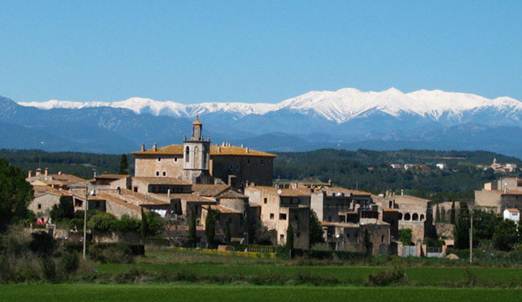
Catalonia is a part of a nation without state in Spain. Catalonia is also an autonomous community in northeastern Spain, with the official status of a "nationality" of Spain. Catalonia comprises four provinces: Barcelona, Girona, Lleida, and Tarragona. Its capital and largest city is Barcelona. Catalonia covers an area of 32,114 km² and has an official population of 7,535,251. Its borders essentially reflect those of the former Principality of Catalonia. It borders France and Andorra to the north, Aragon to the west, the Valencian Community to the south, and the Mediterranean Sea to the east (580 km coastline). The official languages are Catalan, Spanish and Aranese (Occitan).
Figueres – the home of Salvador Dalí

Dalí in 1972.
Figueres is the capital of the comarca of Alt Empordà, in the province of Girona, Catalonia, just south of the French border. The town is the birthplace of artist Salvador Dalí, and houses the Teatre-Museu Gala Salvador Dalí, a large museum designed by Dalí himself which attracts many visitors. It is also the birthplace of Narcís Monturiol i Estarriol, inventor of the first successful machine-powered submarine. Also born here was Mónica Naranjo, one of the best selling Spanish singers of the 1990s and 2000s.
Salvador Domènec Felipe Jacinto Dalí i Domènech, Marquis de Púbol (May 11, 1904 – January 23, 1989), commonly known as Salvador Dalí, was a prominent Spanish surrealist painter born in Figueres, Spain. Dalí was a skilled draftsman, best known for the striking and bizarre images in his surrealist work. His painterly skills are often attributed to the influence of Renaissance masters. His best-known work, The Persistence of Memory, was completed in 1931. Dalí's expansive artistic repertoire includes film, sculpture, and photography, in collaboration with a range of artists in a variety of media.
Dalí attributed his "love of everything that is gilded and excessive, my passion for luxury and my love of oriental clothes" to a self-styled "Arab lineage", claiming that his ancestors were descended from the Moors. Dalí was highly imaginative, and also had an affinity for partaking in unusual and grandiose behavior. His eccentric manner and attention-grabbing public actions sometimes drew more attention than his artwork to the dismay of those who held his work in high esteem and to the irritation of his critics.
Barcelona
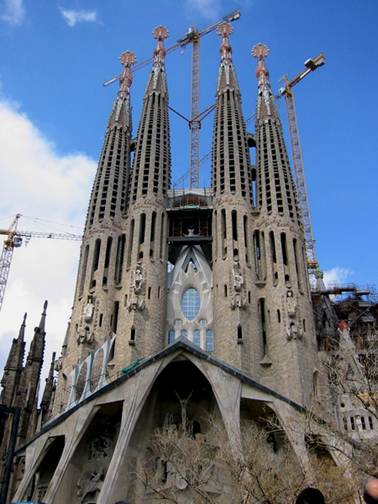
Sagrada Família church in Barcelona,
the masterpiece of Antoni Gaudí (1852–1926).
Barcelona is the second largest city in Spain after Madrid, and the capital of Catalonia, with a population of 1,6 million within its administrative limits on a land area of 101.4 km2 (39 sq mi). The urban area of Barcelona extends beyond the administrative city limits with a population of between 4,200,000 and 4,500,000, being the sixth-most populous urban area in the European Union after Paris, London, Ruhr area, Madrid and Milan. About five million people live in the Barcelona metropolitan area. It is also Europe's largest metropolis on the Mediterranean coast.
Barcelona is today one of the world's leading tourist, economic, trade fair/exhibitions and cultural-sports centres, and its influence in commerce, education, entertainment, media, fashion, science, and the arts all contribute to its status as one of the world's major global cities.
The Basílica i Temple Expiatori de la Sagrada Família (Basilica and Expiatory Church of the Holy Family), commonly known as the Sagrada Família, is a large Roman Catholic church in Barcelona, designed by Catalan architect Antoni Gaudí (1852–1926). Although incomplete, the church is a UNESCO World Heritage Site, and in November 2010 was consecrated and proclaimed a minor basilica by Pope Benedict XVI.
Though construction of Sagrada Família had commenced in 1882, Gaudí became involved in 1883, taking over the project and transforming it with his architectural and engineering style—combining Gothic and curvilinear Art Nouveau forms. Gaudí devoted his last years to the project and at the time of his death in 1926, less than a quarter of the project was complete. Sagrada Família's construction progressed slowly as it relied on private donations and was interrupted by the Spanish Civil War—only to resume intermittent progress in the 1950s. Construction passed the mid-point in 2010 with some of the project's greatest challenges remaining and an anticipated completion date of 2026—the centennial of Gaudí's death. The basílica has a long history of dividing the citizens of Barcelona—over the initial possibility it might compete with Barcelona's cathedral, over Gaudí's design itself, over the possibility that work after Gaudí's death disregarded his design, and the recent possibility that an underground tunnel of Spain's high-speed train could disturb its stability.
Describing Sagrada Familia, art Critic Rainer Zerbst said "it is probably impossible to find a church building anything like it in the entire history of art" and Paul Goldberger called it 'the most extraordinary personal interpretation of Gothic architecture since the Middle Ages'.
|
|
Valencia Region
|
The Valencia region in Spain is an extremely beautiful and very fertile area known as La Huerta (Garden of Spain).
The famous Spanish song lyrics of the popular Spanish song Valencia proclaim that Valencia is the 'land of flowers, light and love' and this is very true, because Valencia is indeed full of flowers and well known for the amazing light which Valenciano painter Joaquín Sorolla y Bastida highlights in his paintings. It's also overflowing with romance and passion and as there are many romantic things to do in Valencia it's a popular choice for city breaks and holidays in the sun.
The Valencia Region of Spain is divided into 3 provinces. CASTELLON to the north, VALENCIA in the center and ALICANTE in the south.
These three provinces form the Comunitat Valenciana - Land of Valencia - the city and the provinces are all called Valencia. This lovely region of Spain has over 500 kilometres of stunning coastline which are full of some of the most popular holiday destinations in Europe.
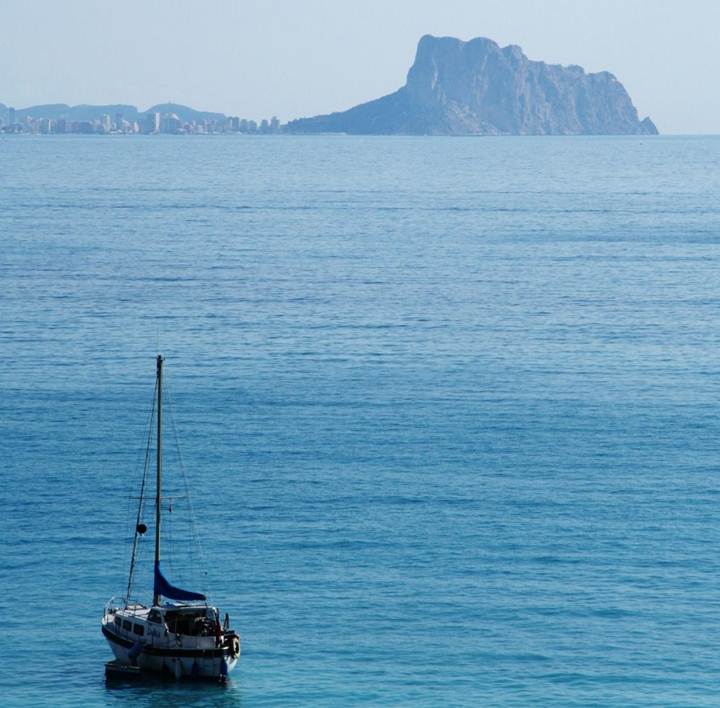
Valencia City
Valencia is the third largest city in Spain after Madrid and Barcelona, and the capital of the autonomous community of Valencia, with a population of 809,267 within its administrative limits on a land area of 134.6 km2 (52 sq mi). It is the 15th most populous municipality in the European Union. The urban area of Valencia extends beyond the administrative city limits with a population of between 1,175,000 and 1,564,145. Between 1,705,742 and 2,300,000 people live in the Valencia metropolitan area.
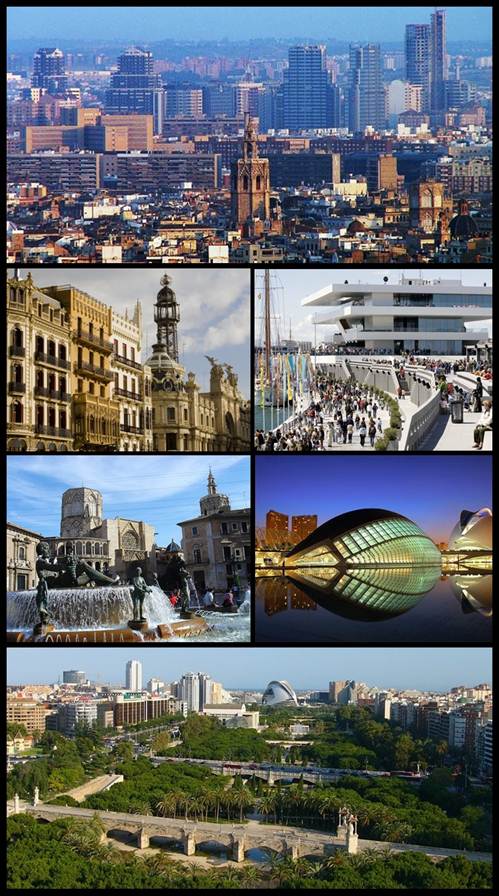
Altea – the old fishermen’s village at at Costa Blanca
Altea is an old fishermen’s village that has been turned into a tourism magnet the latest year, though still with the original flavours in place.
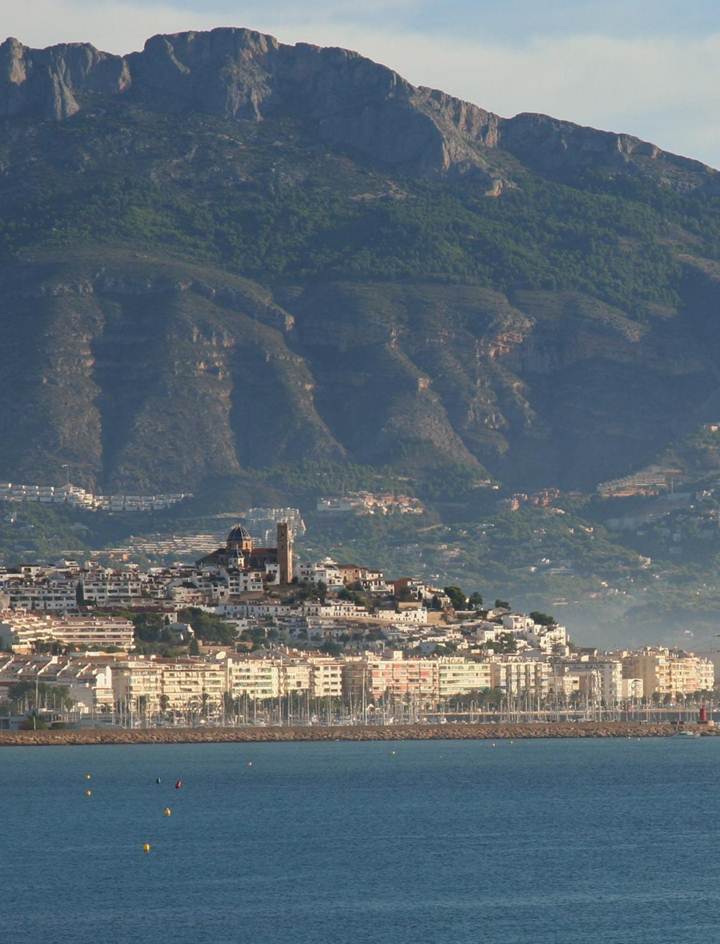
Benidorm

Photo: Wikipedia.
Benidorm is a coastal town and municipality located in the comarca of Marina Baixa, in the province of Alicante.
Prior to the 1960s, Benidorm was a small village. Today it stands out for its hotel industry, beaches and skyscrapers, built as a result of its tourist-oriented economy. According to the 2010 census, Benidorm has a permanent population of 71,198 inhabitants, ranking as the fifth most populous town in the Alicante province. It is one of the most important holiday resorts in Spain, with an area of 38.5 km² and a population density of 1,848.8 inhab/km². Due to the unique skyline formed by its numerous tall hotels and apartment buildings it is sometimes referred to as the "Manhattan of Spain" or "Beniyork", which is unlike any other on the Costa Blanca (White Coast). According to the Urban Age project, Benidorm has the most high-rise buildings per capita in the world. Benidorm itself is dwarfed by the 1406 m tall Puig Campana, which is one of the most impressive mountains of the Costa Blanca.
Alicante

Esplanada and Carbonell House, Alicante.
Photo: Wikipedia.
Alicante is a city in Spain, the capital of the province of Alicante and of the comarca of Alacantí, in the south of the Valencian Community. It is also a historic Mediterranean port. The population of the city of Alicante proper was 334,329, estimated as of 2011, ranking as the second-largest Valencian city. Including nearby municipalities, Alicante conurbation was populated by 462,281 residents.[3] Population of the metropolitan area (including Elche and satellite towns) was 771,061 as of 2011 estimates, ranking as the eighth-largest metropolitan area of Spain.
|
|
|
|
Mediterranean beaches
|
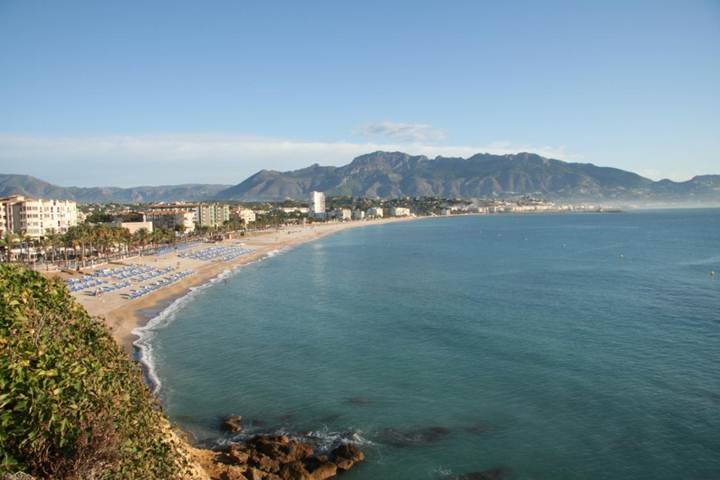

From your very first glimpse, the views of the Mediterranean Sea make a dramatic and lasting impression. The climate in the Mediterranean area is very warm and pleasant, and has very nice hot and dry summers. These are the best conditions for wonderful summer holidays at the beach, but also for a high rate of water evaporation. The Mediterranean Sea looses in this way nearly one meter of its water height every year!
This evaporating water leaves all its salts in the remaining water. This is why you feel a lot lighter when you swim in the Mediterranean than when you swim in the ocean: the water of the Mediterranean contains more salt than the water of the Atlantic (36 to 38 grams per litre in the Mediterranean against 34.9 in the Atlantic).
|
|
|
|
Mediterranean waters |
The origins of the Mediterranean waters

The origins of this water are:
· a small quantity coming from the rivers and the rain (1200 km3 per year);
· a very small quantity coming from the Black Sea (200 km3 per year);
· most of it comes from the Atlantic Ocean, through the Strait of Gibraltar (35 000 km3 per year).
It has been calculated by scientists that the Mediterranean waters need 100 years to renew themselves totally (through evaporation and water coming in through the Strait of Gibraltar).
The Strait of Gibraltar is not very wide (around 14 km at the narrowest point) and quite shallow (300 m deep). Therefore, there is a very strong current going through the Strait, coming from the Atlantic into the Mediterranean Sea.
Sailing in Mediterranean waters
The Mediterranean- it conjures up images of gorgeous coves, aqua water, cities spreading up hillsides, amazing food and friendly tanned locals. The Mediterranean lives up to its reputation- it is hugely varied, bordered by so many European, Middle Eastern and North African countries, and has an amazing climate.
Where you might go whilst sailing the med depends on what you would like to see or do. The French Riviera is a mecca for those seeking glamour, shopping and the celebrity lifestyle- think Monaco, Nice, St Tropez and Cannes. Here you can take your boat into the marinas and see the glitz and glamour of the cities, or anchor offshore and watch the world go by.
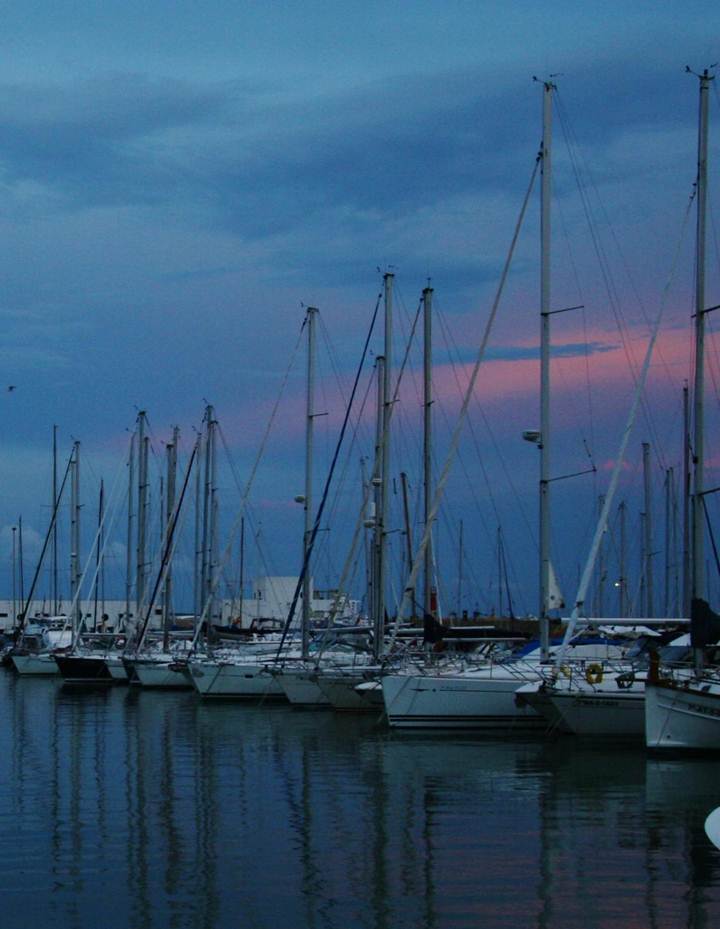
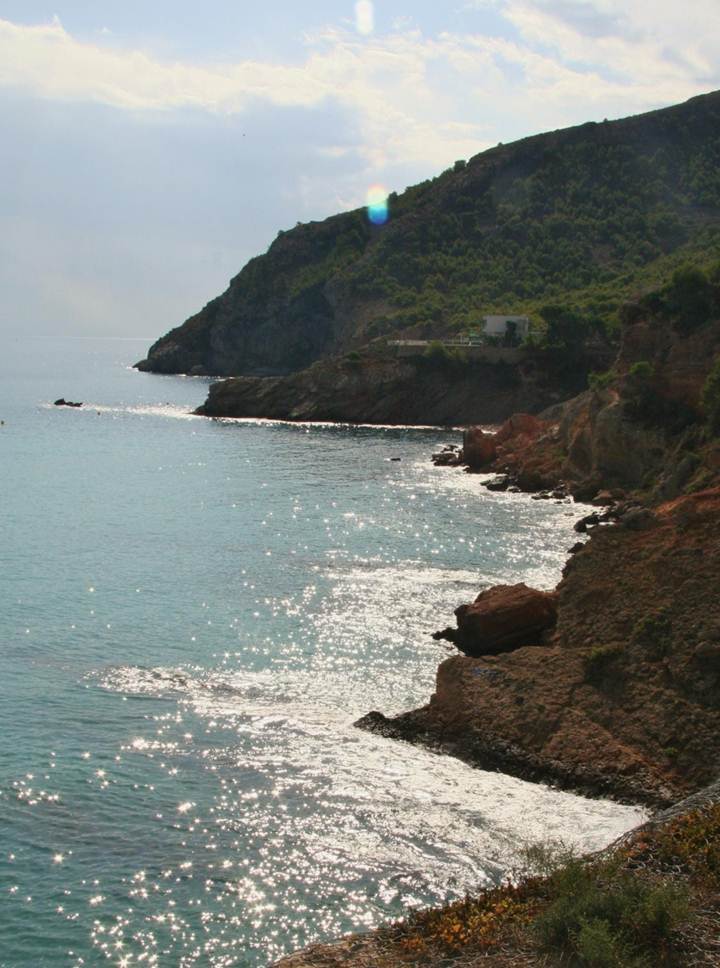
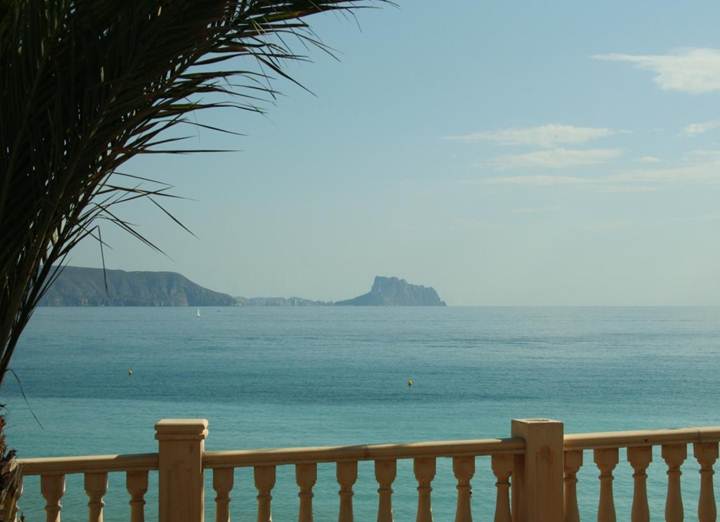
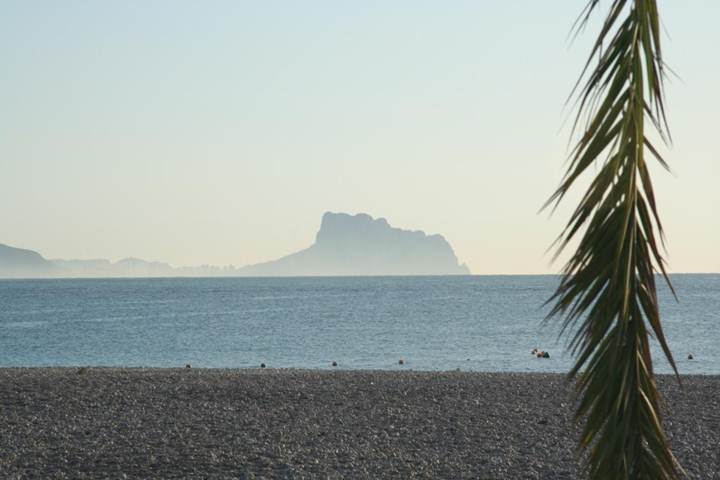
|
|
|
|
Mediterranean living |
Styles, colours and beauty of living alongside the Mediterranean. The good life…
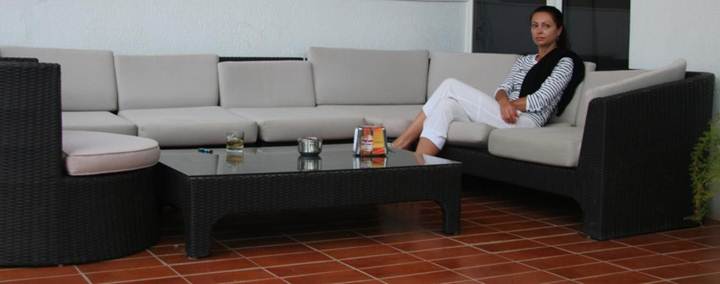

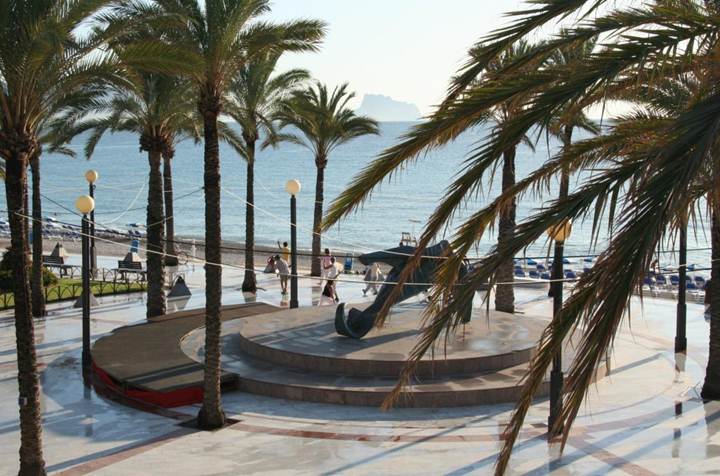
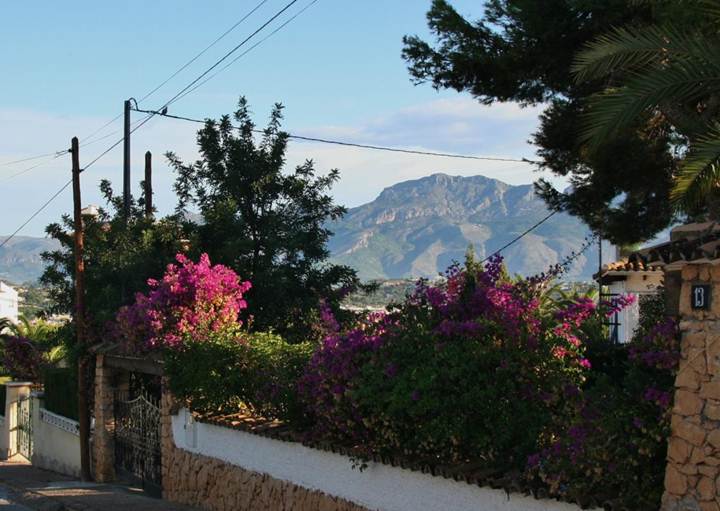
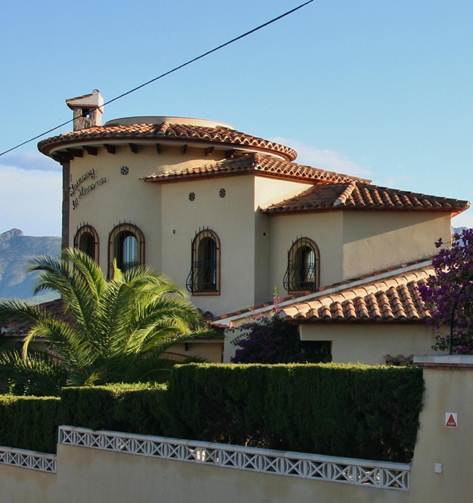
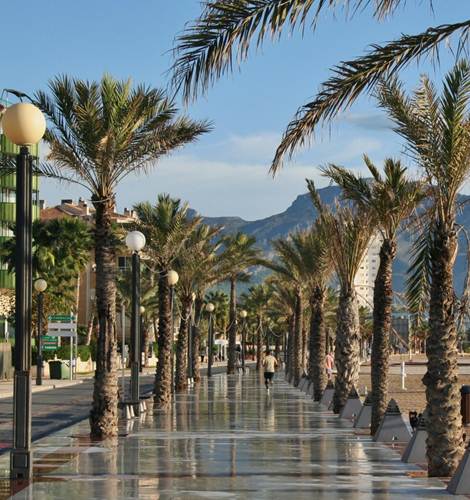
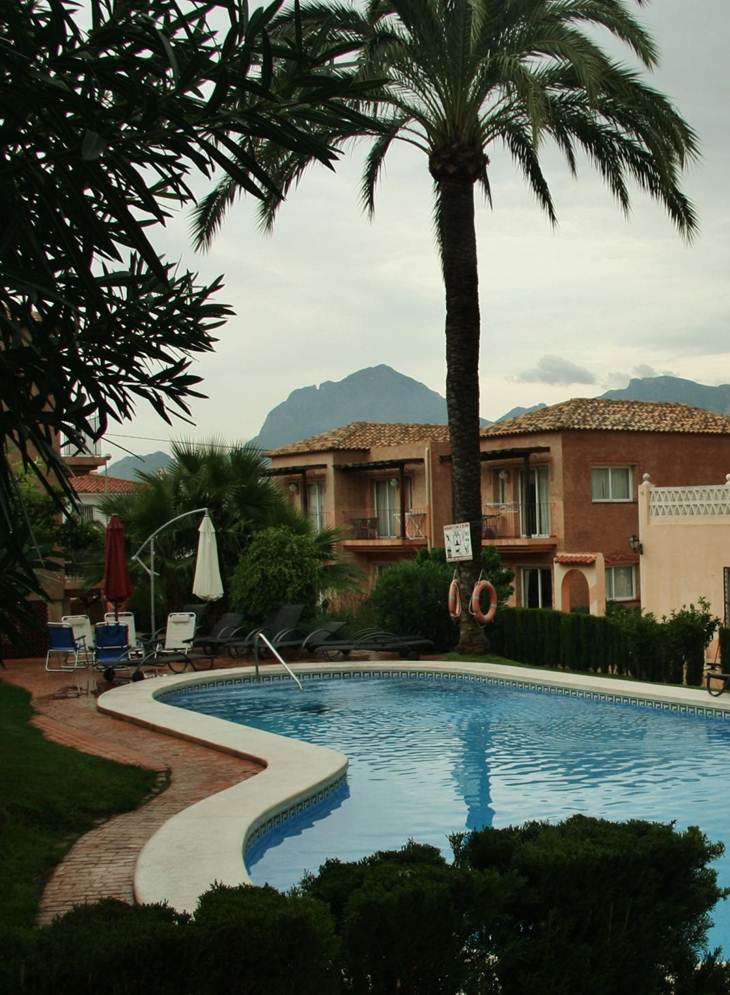
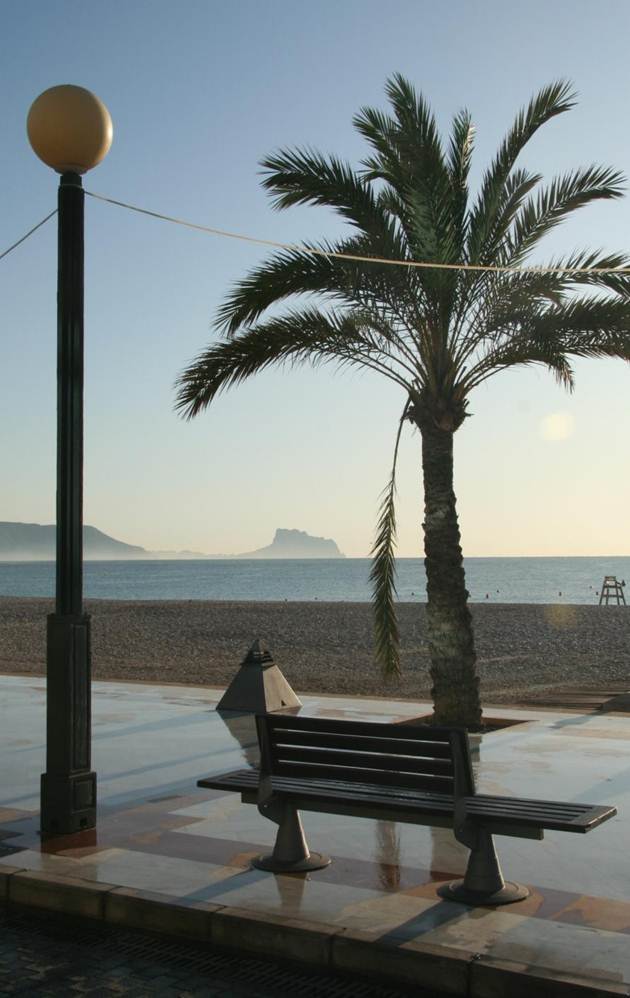
|
|
|
|
Mediterranean food & wines
|
The idea of the ‘standard Mediterranean’ ... is a modern construction of food writers and publicists in Western Europe and North America earnestly preaching what is now thought to be a healthy diet to their audiences by invoking a stereotype of the healthy other on the shores of the Mediterranean. Their colleagues in Mediterranean countries are only too willing to perpetuate this myth. The fact of the matter is that the Mediterranean contains varied cultures...
Around 1975, under the impulse of one of those new nutritional directives by which good cooking is too often influenced, the Americans discovered the so-called Mediterranean diet.... The name... even pleased Italian government officials, who made one modification: changing from diet—a word which has always seemed punitive and therefore unpleasant—to Mediterranean cuisine.
Despite this, given the geography, these nation-states have influenced each other over time in both food and culture and the cooking evolved into sharing common principles. Mediterranean cuisine is characterized by its flexibility, its range of ingredients and its many regional variations. The terrain has tended to favour the raising of goats and sheep.
Fish dishes are also common, although today much of the fish is imported since the fisheries of the Mediterranean are weak. Seafood is still prominent in many of the standard recipes.
Olive oil and garlic are widely used in Mediterranean cuisine. It is widely believed that Mediterranean cuisine is particularly healthful; see Mediterranean diet.
Grilled meats, pita bread, hummus, and falafel are very popular forms of the eastern type of the cuisine.
Spain also makes paella, which is rice and mussels or other types of seafood.
|
Paella Paella is an internationally-known rice dish from Spain. It originated in the fields of a region called Valencia in eastern Spain. Today paella is made in every region of Spain, using just about any kind of ingredient that goes well with rice. There are as many versions of paella as there are cooks. It may contain chicken, pork, shellfish, fish, eel, squid, beans, peas, artichokes or peppers. Saffron, the spice that also turns the rice a wonderful golden color is an essential part of the dish.
|
|
A good fish meal in Spain or Italy is often ‘made in Lithuania’
Every day, all year round, a truck drives out from the Espersen fish processing plant in the Klaipeda Free Economic Zone, fully loaded with over 20 tonnes of finished fish fillets for the south and west European markets. Not many days later, these fish products are to be found at a restaurant table in Spain, Italy and Greece as delicious dishes prepared by chefs who so often are amazing fish experts and know to appreciate the wonderful ingredients the Baltic Sea and Arctic Ocean have to offer. Because it is from these seas Espersen Lietuva gets its fish raw material, roughly 40 tonnes per day. About 50% of the fish they purchase from the Baltic countries Lithuania, Latvia, Sweden and Denmark, while the remaining half is purchased from Norway, caught in northern Atlantic waters. Some of the fish is purchased fresh, some frozen. Fish products from the plant are eaten at present by people in the UK, Germany, France, Portugal, Spain, Italy and Greece.
|
Riviera wines
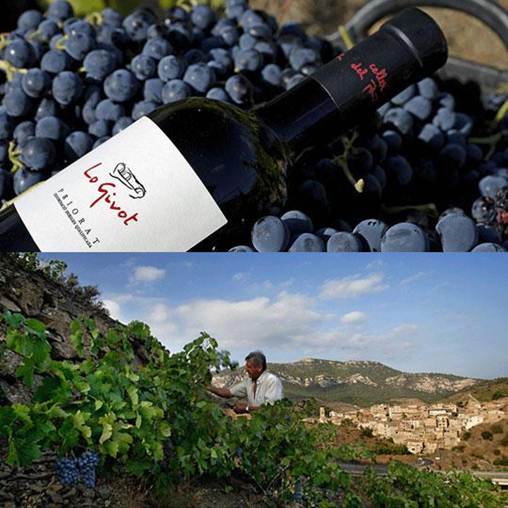
One of the key elements in the Mediterranean diet -- along with olive oil and bread --
is wine. Wherever the Greeks and later the Romans went in their efforts to conquer the
Mediterranean world, they took along wine and the grapes to produce it.
Even in recent years, wine has continued to play a strong dietary role. Ancel and Margaret Keys, in their 1975 book ``How to Eat Well & Stay Well The Mediterranean Way,'' write: ``... the use of wine at every main meal and as an aperitif now and then means that the average man gets close to 10 percent of his daily calories from alcohol.''
In the south of France, a radical change in direction has led to the planting of classy varietals such as chardonnay, merlot and cabernet in the Languedoc-Roussillon region that stretches along the Mediterranean shore west of the Rhone toward the border with Spain. Many wine shops and restaurant wine lists now carry wines from one or more small producers in the region and two large-scale efforts are producing wines of exceptional value. Look for Fortant de France or Reserve St. Martin, both of which offer cabernet sauvignon, merlot, chardonnay, sauvignon blanc, viognier and syrah.
In Provence, if we include the southern Rhone Valley, a vast selection of red wine ranges from the pricey estate wines of Chateauneuf-du-Pape to small producer and cooperative wines from various ``Cotes'' or ``Coteaux'' appellations with names such as Ventoux, Luberon, Provence, Aix-en-Provence, Baronnies and Rhone or Rhone-Villages. Among the most dependable and widely circulated wines from this area are those from La Vieille Ferme.
Crossing into Italy, one sees a good deal of white Gavi and red Cinqueterre on the Italian Riviera. Wines made to the south, along the west coast, may have charm but most are too ephemeral to export. The white wines of Orvieto are an exception, but the reds don't shine until we reach the southern peninsula. There, in Campania, the aglianico grape makes superior reds and the white fiano and greco di tufo wines stand out. The region's outstanding producer is Mastroberardino, whose labels include Lacryma Christi and Taurasi. In Apulia, to the east, grapes such as primativo, negroamaro and malvasia nera make dark, fruity wines, all too often robbed of character by overcropping. The outstanding red of Basilicata, Aglianico del Vulture, is worth seeking out, however. Most of Calabria's wine is drunk there, but Sicily exports considerable wine to the United States, most notably Corvo.
In Spain, the most important region facing the Mediterranean, is the Penedes in Catalonia. It is the center of the country's sparkling wine industry and also produces very serviceable reds, whites and roses. The region's leading producer of still wines is Torres. To the south, inland from Alicante, some good wines are coming from vineyards at Jumilla.
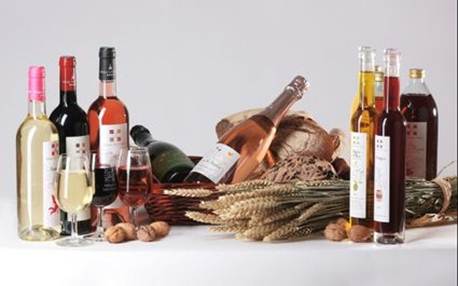
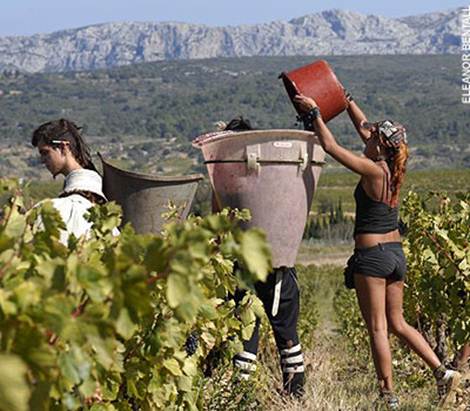
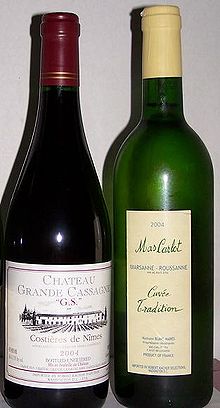
Languedoc - Roussillon wine, including the vin de pays labeled Vin de Pays d'Oc, is produced in southern France. While "Languedoc" can refer to a specific historic region of France and Northern Catalonia, usage since the 20th century (especially in the context of wine) has primarily referred to the northern part of the Languedoc-Roussillon région of France, an area which spans the Mediterranean coastline from the French border with Spain to the region of Provence. The area has around 700,000 acres (2,800 km2) under vines and is the single biggest wine-producing region in the world, being responsible for more than a third of France's total wine production.[1] As recently as 2001, the region produced more wine than the entire United States.
- Bookmark :
- Digg
- del.icio.us
- Stumbleupon
- Redit it
SOLDIERS AND GUNS
- Posted by - (0) Comment
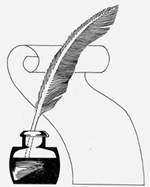
VilNews will from time to time publish poetry that we receive from our readers. Please send us yours!
I am a country
torn by war.
My wounds are not healed;
my people still feel
and hear and taste
their own warm blood,
cold guns, and black boots
ravaging through their soul...
Exploding through their mind,
tearing through their heart:
Their home is torn apart.
They find no answers,
only iron doors.
I shed bitter tears
from sweeter days
As I remember a cool morning haze
Sweep over my valleys
in a dance of praise.
And now I ask for freedom
and the world looks the other way.
I cry for what is right.
I abhor what is not
and the echo fills but a few ears
and the rest comes back to me
touching but a few old weeping trees
and a quiet haunting sea.
The Baltic beckons to me to come
but the gates are guarded
by Soldiers and Guns.
Susan Lucas Kazenas, Copyright 1991 (Written as Lithuania fought for independence from the former USSR)
- Bookmark :
- Digg
- del.icio.us
- Stumbleupon
- Redit it
- Posted by - (1) Comment
![]()
![]()
EUROPE – MY HOME & MY CASTLE (2 of 10)
Switzerland & Italy
|
|
Text and photos: Aage Myhre
|
![]()
SWITZERLAND
|
The best known Lithuanian politician in European before 1916 I have come south in Switzerland, to the incredibly beautiful Lake Geneva. I sit on the lake bank in the picturesque Montreux town, knowing that only five kilometres from here lived the best-known Lithuanian political figure on the European scene 100 years ago. Juozas Gabrys (1880-1951) was his name. This extraordinarily active personality is today little known in Lithuania and other European countries, like many other thinkers who helped to shape today‘s Europe. Visionaries like Gabrys are often neglected by history, which would not have been the case had they become presidents of their country. Historians remember Gabrys as the organiser of the four international conferences on Lithuania between 1916 and 1918 in Lausanne and Bern. He bought a farm here in the most romantic area of Switzerland near the town Vevey five kilometres from where I’m sitting, a region where Hugo, Dostoyevsky, Charlie Chaplain, Nabokov, and others also felt at home. |
|
Vevey is, by the way, also where Henri Nestlé in 1867 invented his now famous powdered milk and set up a company that was to develop into today‘s number one coffee and chocolate producer worldwide.
But back to Juozas Gabrys. In 1977, Alfred Erich Senn at
University of Wisconsin, Madison, wrote a piece about him in the journal
Lituanus, stating that Gabrys was a controversial figure in the history of
independent Lithuania. He continues:
“Since he died in 1951, I never had the opportunity to
meet him. In 1957 my father and I visited his widow in Vevey, Switzerland. She
received us in friendly fashion, gave me copies of several of his books, and
even presented me with a file of five issues of Gabrys' newspaper, la Lituanie Independante. On the other hand, she would not
permit me to search through his papers. She looked through several files
herself and insisted that the documents were too personal to turn over to me.
Unfortunately, after her death, most of the archive was destroyed. Dr. Albertas
Gerutis managed to save Gabrys' manuscript memoirs, "Tėvynės
sargyboj," but the rest was lost. As a result, documentation of his career
has to come from other sources.
Gabrys was undoubtedly the best known Lithuanian political figure on the European scene before 1916. He had been very active in Paris for several years, and he had established a number of friendships in French intellectual circles. He published memoirs, which appeared in French in 1920, described this phase of his work in detail, but one has to turn to his unpublished memoirs, now in Dr. Gerutis' possession, to get a clearer picture of his career after 1916 when he had begun to work with the Germans.
On August 1, 1919, Gabrys published the first issue of his newspaper La Lituanie Independante, which was aimed at discrediting Provisional Government in Kaunas. In the lead article, entitled "Our Aim," Gabrys proclaimed his desire to seek Lithuanian independence on good terms with all its neighbors. The keynote of the issue was his demand for the election of a Constituent Assembly. A report on the "Present situation in Lithuania" criticized the government as lacking "any support worthy of the name." Completing the first page was the text of an open letter to President Smetona, written in May, declaring that the government feared facing elected representatives of the people.
The issue continued with a "letter from Lithuania," decrying the power of German officials in the country and denouncing the subservience of the "Smetona clique." An anonymous report on "mass discontent in Lithuania" told of moves by the government against Vincas Bartuška and others of Gabrys' friends, and it declared that meetings of Lithuanian patriots were endorsing the sentiments of Gabrys' open letter to Smetona.
Read more at http://www.lituanus.org/1977/77_1_02.htm
|
|
Winter carnival One of my good winter experiences here took place some years ago when I celebrated 'Fasching (winter carnival)' in an inn outside the capital, Bern, in a half timbered ‘gasthaus’ with a large open fireplace, packed with partying Swiss this evening. All dressed in their national leather and homespun suits. High humidity. Much beer and powerful, heavy food. Switzerland is good in so many ways. Every season! |

Montreux
is beautiful!

A stroll
along the impressive lakeside promenade in Montreux at Lake Geneva.
![]()
ITALY
Management for Presidents. Villa d’Este, Lace Como, Italia
I prefer classical architecture. Modern buildings in glass and steel
rarely appeal to me. I see them
as cold, sometimes almost hostile. The
Renaissance style is the one I admire most. Thus
I understood already in my school years, when I sat up three days and nights to
write an essay about Michelangelo. The
man and his work was simply so fascinating that I could not sleep.
Italian Michelangelo di Lodovico Buonarroti Simoni (1475 - 1564), commonly known
as Michelangelo, was the very 'renaissance guru'; a painter, sculptor,
architect, poet and engineer. Only
Leonardo da Vinci can be compared. Strange,
by the way, that so many of the contemporary geniuses of those days were
multi-talented.
During my years as a business leader in Trondheim, Norway, I used some time to
read about leadership and management. The
course ended in May-June a year in the mid 1980s, and I set my course for Villa
d'Este on Lake Como in northern Italy. I
was going on one week's final course: 'Management Course for Presidents, a
Concentrated program of study in professional management for chief executives.'
We were three persons from Trondheim arriving at Linate Airport in Milan that
late May evening. Soon I was sitting behind the wheel of a rented car, a
blue-black Lancia Gamma. On the
motorway we were met by heavy lightning and thunder, the rain pouring. Police cars with flashing blue lights
driving slowly on the highways around Milan to get other cars to take it easy. Not always easy in Italy... The weather improved when we an hour
later, following the winding mountain roads, approached the hotel on Lake Como. Soon we come to a guard shelter with a
turnpike. The guard checked our
booking information, and not long after we parked outside one of the world's
most beautiful hotels - in an incredibly stunning setting on the hillside above
the lake. Later I was told that
the reason for placing the guard a full mile before reaching the hotel, was
that business people from Milan should be notified in time to get hidden mistresses
away in case the wives came for a hotel visit...
Villa d'Este was originally a privately Renaissance palace, built in the 1500s,
since 1873 a luxury hotel. We
were here for a week, going through a busy
course agenda and enjoying nature, luxury, in one of the world's most scenic
areas.

The Renaissance Palace of Villa d'Este on Lake Como, between Italy and Switzerland is one of the world's finest hotels.
Foto: Italianvisits.com.
The leaning tower of Pisa, North Italy

My daughter Cassandra tries to correct the leaning tower of Pisa. It does not work.
District of Tuscany – city of Florence



The
Basilica di Santa Maria del Fiore (English: Basilica of Saint Mary of the
Flower) is the cathedral church of Florence. The Duomo, as it is ordinarily
called, was begun in 1296 in the Gothic style to the design of Arnolfo di
Cambio and completed structurally in 1436 with the dome engineered by Filippo
Brunelleschi. The exterior of the basilica is faced with polychrome marble
panels in various shades of green and pink bordered by white and has an
elaborate 19th century Gothic Revival façade by Emilio De Fabris.

The
Palazzo Medici, also called the Palazzo Medici Riccardi after the later family
that acquired and expanded it, is a Renaissance palace located in Florence. The
palace was designed by Michelozzo di Bartolomeo for Cosimo de' Medici, head of
the Medici banking family, and was built between 1445 and 1460. The House of Medici or Famiglia de' Medici was a political
dynasty, banking family and later royal house that first began to gather
prominence under Cosimo de' Medici in the Republic of Florence during the late
14th century. The family originated in the Mugello region of the Tuscan
countryside, gradually rising until they were able to found the Medici Bank.
The bank was the largest in Europe during the 15th century.

The
Ponte Vecchio ("Old Bridge") is a Medieval stone closed-spandrel
segmental arch bridge over the Arno River, in Florence, noted for still having
shops built along it, as was once common. Butchers initially occupied the
shops; the present tenants are jewellers, art dealers and souvenir sellers. A
curious fact regarding the words bank and bankruptcy is that they derive from
the economic activity on Ponte Vecchio. The stand, or table, that held the
merchants goods was called a "banco" (“bench”). When a merchant was
no longer able to pay his taxes, his banco was literally broken or
"rotto" into pieces, therefore creating the term
"bancorotto" which translated into the word "bankruptcy" in
English.
A room with no view

A Room
with a View is a 1908 novel by the English writer E. M. Forster, about a young
woman in the repressed culture of Edwardian England. Set in Florence and
England, the story is both a romance and a critique of English society at the
beginning of the 20th century. Merchant-Ivory produced
an award-winning film adaptation in 1985. Our hotel room in Florence faced a house wall, a room with no view, but my daughter Cassandra was able to take reading light.

When in Rome, do as the Romans do
Rome is the capital of Italy and the country's largest and most populated city and commune, with over 2.7 million residents. The city is located in the central-western portion of the Italian Peninsula, on the Tiber River within the Lazio region of Italy. Rome's history spans two and a half thousand years. It was the capital city of the Roman Kingdom, the Roman Republic and the Roman Empire, which was the dominant power in Western Europe and the lands bordering the Mediterranean for over seven hundred years from the 1st century BC until the 7th century AD. Since the 1st century AD Rome has been the seat of the Papacy and, after the end of Byzantine domination, in the 8th century it became the capital of the Papal States, which lasted until 1870. In 1871 Rome became the capital of the Kingdom of Italy, and in 1946 that of the Italian Republic.

The
Trevi Fountain is a fountain in the Trevi district in Rome, Italy. Standing 26
metres (85.3 feet) high and 20 metres (65.6 feet) wide, it is the largest
Baroque fountain in the city and one of the most famous fountains in the world.

The
Colosseum, originally the Flavian Amphitheatre, is an elliptical amphitheatre
in the centre of the city of Rome, the largest ever built in the Roman Empire.
It is considered one of the greatest works of Roman architecture and Roman
engineering. Occupying a site just east of the Roman Forum, its construction
started in 72 AD under the emperor Vespasian and was completed in 80 AD under
Titus, with further modifications being made during Domitian's reign (81–96).
The name "Amphitheatrum Flavium" derives from both Vespasian's and Titus's
family name (Flavius, from the gens Flavia).Capable of seating 50,000
spectators, the Colosseum was used for gladiatorial contests and public
spectacles such as mock sea battles, animal hunts, executions, re-enactments of
famous battles, and dramas based on Classical mythology. The building ceased to
be used for entertainment in the early medieval era. It was later reused for
such purposes as housing, workshops, quarters for a religious order, a
fortress, a quarry, and a Christian shrine.


One of
many fantastic nights in Rome. My kids simply loved them.
Venice shows me that architecture first of all is about life
|
|
Venice is a perfectly beautiful city. The smells, the sounds, the narrow alleys, canals, bridges. Place suddenly, often unexpectedly, opens as you go. The music, The gondoliers’ songs, vaparettos, taxi boats. I feel well. It is as if I'm in the middle of the very architectural being. I was once one of many who believed that architecture is primarily about buildings. Venice shows me that architecture first of all is about life. Our human life. How it is the architecture which gives us the framework and background for how best to walk, sit, eat, sleep, work, meet with others, experience beauty. I understand that the spaces between buildings are as important as the houses themselves. That the widths, heights, depths and connections between everything we surround ourselves with are important. The relationship between them. Interaction. Venice makes me feel that the physical is in total harmony with life itself. Also the spiritual. It is as if the body, intellect and spirituality converge. I feel an intense happiness. Maybe this town is the world's leading symbol of what an architect should strive to achieve in his work. Maybe it has something to teach us about ourselves. About how important it is to think holistically, holistic in the way we plan our environment and our lives. "A great architect is not made by way of a brain nearly so much as he is made by way of a Cultivated, enriched heart," said the famous American architect Frank Lloyd Wright. Venice tells me that he is right. One does not become a good architect, no matter how much knowledge is acquired, without having talent and an inner inspiration that drives one to draw very good environment for real people interacting with each other. Empathy. Synergy. Proximity. Emotions. In a living symbiosis. |
“Form follows function - that has been misunderstood. Form and function should be one, joined in a spiritual union,” says Llloyd Wright also. He emphasizes that "Art for art's sake is a philosophy of the well-fed." "Get the habit of analysis -analysis goodwill in time enable synthesis two Become your habit of mind. All fine architectural values are human values, else not valuable, "he concludes. Venice is to me proof of that.

Venice taught me to look behind facades. It was here it first dawned on me that it is the human that is good architecture's true nature. The architect's task is to create inspiring framework that promotes, does not conflict with or interfere with human activity. I start taking pictures of people and situations,
more than of buildings.
Photo: Aage Myhre, 1974.
|
Venice is a good symbol of life itself...
My Venice is different from the tourists’ Venice.
|
Venice has been known as the "La Dominante", "Serenissima", "Queen of the Adriatic", "City of Water", "City of Masks", "City of Bridges", "The Floating City", and "City of Canals". Luigi Barzini described it in The New York Times as "undoubtedly the most beautiful city built by man". Venice has also been described by the Times Online as being one of Europe's most romantic cities. The city stretches across 117 small islands in the marshy Venetian Lagoon along the Adriatic Sea in northeast Italy. The saltwater lagoon stretches along the shoreline between the mouths of the Po (south) and the Piave (north) Rivers. The Republic of Venice was a major maritime power during the Middle Ages and Renaissance, and a staging area for the Crusades and the Battle of Lepanto, as well as a very important center of commerce (especially silk, grain, and spice) and art in the 13th century up to the end of the 17th century. This made Venice a wealthy city throughout most of its history. It is also known for its several important artistic movements, especially the Renaissance period. Venice has played an important role in the history of symphonic and operatic music, and it is the birthplace of Antonio Vivaldi.











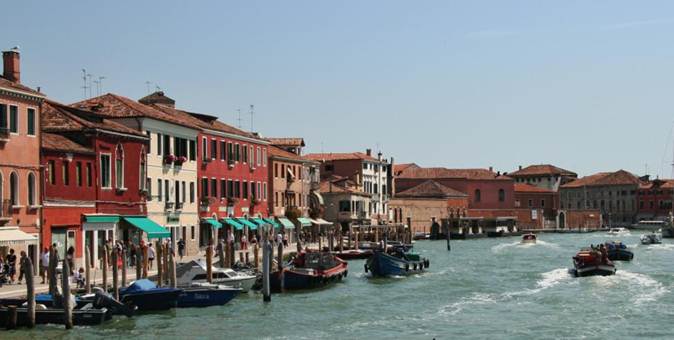

Gargano, South Italy has the best beaches of the Mediterranean Sea!
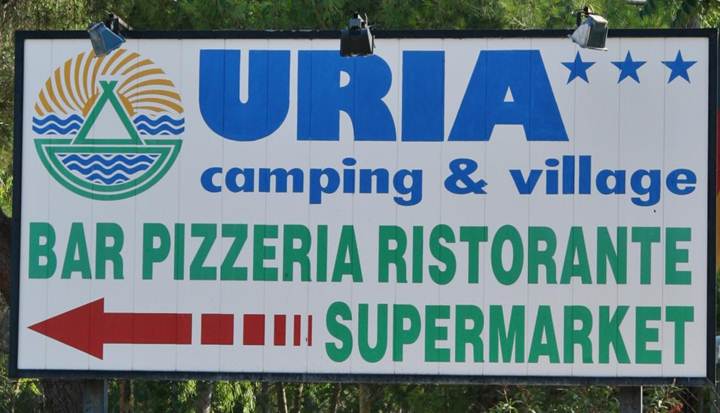
Gargano is a historical and geographical Italian sub-region situated in Apulia, consisting of a wide isolated mountain massif made of highland and several peaks and forming the backbone of the Gargano Promontory projecting into the Adriatic Sea. The high point is Monte Calvo at 1,065 m (3,494 ft). Most of the upland area, about 1,200 km2 (460 sq mi), is part of the Gargano National park, founded in 1991. It is within the Italian Province of Foggia. My good friends are running a motel & camping close to the Adriatic Sea. A paradise for travellers!

The
coast of Gargano is rich in beaches and tourist facilities. Vieste, Peschici
and Mattinata are world-wide-famous seaside resort locations. The two major
salt lakes of Lesina and Varano are located in the northern part of the
peninsula. Monte Gargano is the site of the oldest shrine in Western Europe
dedicated to the archangel Michael, Monte Sant'Angelo sul Gargano. Today
tourism is thriving with several hotels and campsites, in particular along the
seaside of Marina of Lesina, give the possibility of staying in this suggestive
area. Tourist attractions include the cathedral, the episcopal palace, the
Abbey of Santa Maria of Ripalta and the volcanic rocks dating back to the
Triassic era, known as "Black Stones", as well as the Sanctuary of
San Nazario.


|
|

I will always feel gratitude towards the
Pacilli family here in Gargano. They have taught me important things about
friendship, companionship, food, Italian wine and the joy of a long meal among friends when darkness falls...
|
Santa
Claus and Lithuania's Grand Duchess My years in Lithuania and my many visits to Italy have put a different and very special Christmas story onto my lap. Far south in Italy, a little south of Gargano, lies the city of Bari with its Cathedral Basilica di San Nicola, built between1087 and 1197. This church was erected over the remains of St. Nicholas (270-343). His relics were originally stolen from the city of Myra in today's South-west Turkey. When Myra in the 1000s was occupied by the Saracens, the Catholic Church saw this as an opportunity to move the saint's relics to a more friendly place. According to the justifying legend which was created, had the saint himself, during a voyage from Myra to Rome, arrived at the port of Bari and then selected the city as his burial place. |
|
It came to great competition for the
relics between Venice and Bari. The latter won and the
relics were removed just below the nose
of their Greek keepers and
their Muslim masters. On 9 May 1087 the remains safely arrived
in Bari. A crypt was immediately made for the
remains of this important saint, and a new church was
started built on top of the crypt. Pope Urban II was present at
the consecration of the crypt in 1089. The
church, which naturally carried the saint's name, was
completed in 1197
460 years pass, and the Lithuanian Grand
Duchess Bona Sforza, who is now the widow after Grand
Duke Sigismund the Old, comes to
Bari gets to collect the
debt Spain's King Philip II has to her. Instead
of receiving money as agreed, she was poisoned by the
Spanish king's envoy and she dies here in Bari in
the year 1557. Her sarcophagus was placed in the middle
of the church. The Sforza family's role in
Bari was very important, and it are no wonder that Bonas sarcophagus in
the St. Nicholas Church to this day symbolizes and
represents this role in a grand manner.
It was duchess Bona and
her mother, Isabella d'Aragona, Princess of Naples,
Duchess of Milan and Bari, who had undertaken the construction of
the fort here in Bari. The fort still
dominates today Bari's old town, but has now turned
into a cultural centre in the midst of the
imposing defensive bastions. The fort also houses a
gallery of plaster casts and temporary exhibits of different character.
|
|
So here they lie, St. Nicolas who later became better known as Santa Claus, and Bona Sforza, the grand duchess who was also the mother of the last two representatives of Lithuania's famous Jagailo dynasty, Sigismund Augustus and Anna Jagiellon. With them came the 300-year dynasty of the House of Gediminas to an end, and today the world knows very little about the country that was once Europe's largest, the Grand Duchy of Lithuania. And ironically enough, the relics of the woman who was such a leading symbol of Lithuania's greatness is to be found, not in Lithuania, but here in southern Italy - along with the remains of the symbol of today's Christmas traditions... |
- Bookmark :
- Digg
- del.icio.us
- Stumbleupon
- Redit it
- Posted by - (0) Comment
![]()
EUROPE – MY HOME & MY CASTLE (2 of 10)
Switzerland & Italy
Today we start our little tour of Europe. Over the next few weeks, I invite you on a journey from north to south, from east to west. Some sections will dwell with history. Some with Lithuanian contact points in various countries. I have travelled across here with camera and notepad for nearly 40 years, and hope you will enjoy seeing and reading about some of my experiences. We start today's tour in Switzerland, and then continue to the south of Italy. Enjoy your trip!

Text and photos: Aage Myhre
aage.myhre@VilNews.com

To join the trip, go to our Section 11
- Bookmark :
- Digg
- del.icio.us
- Stumbleupon
- Redit it
- Posted by - (0) Comment

Vytautas Sliupas
I was reading and watching with interest the dialog in VilNews between Donatas Januta and Olga Zabludoff and several others. However, when David Katz unjustly attacked Ambassador Vygaudas Usackas (whose father and grandparents suffered exile in Siberia) and accused Lithuanians of “not doing enough” (!) to help Lithuania’s Jews during the Nazi occupation, I cannot remain silent. To those who are interested, I suggest reading publication by Dinand Library, College of the Holy Cross, Worcester, MA, section entitled “Oral & Written Testimonies: Lithuania and the Holocaust”, Article link here.
Vytautas Sliupas
Northern California
- Bookmark :
- Digg
- del.icio.us
- Stumbleupon
- Redit it
- Posted by - (0) Comment
Donatas Januta: Reply to Olga Zabludoff re Holocaust in Lithuania
Honest differences of opinion do not mean bad intentions or motives
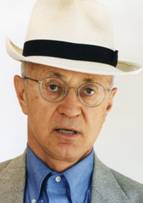
Donatas Januta
Dear Olga,
I have sincerely and honestly tried to respond to you. But you keep changing the rules on me, and you attribute to me intentions and motives which I have not stated and do not have.
We seem to agree on the important basic points. Yes, the Jewish Holocaust was and is the most terrible tragedy that has occurred in Europe. And if I could do anything to undo it, I would. Yes, I do not dispute Israeli historian Dina Porat’s conclusion that half of one percent (0.5%) of Lithuanians were involved directly or indirectly in the German organized killing of Jews. But beyond that, we, including yourself, get into the specifics of individual events – the where, why, and how – and there we do not seem to be able to find common ground.
Read more...
- Bookmark :
- Digg
- del.icio.us
- Stumbleupon
- Redit it
- Posted by - (0) Comment
Donatas Januta: Reply to Olga Zabludoff re Holocaust in Lithuania
Honest differences of opinion do not mean bad intentions or motives
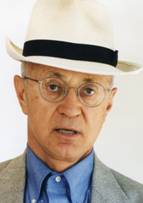
Donatas Januta
Dear Olga,
I have sincerely and honestly tried to respond to you. But you keep changing the rules on me, and you attribute to me intentions and motives which I have not stated and do not have.
We seem to agree on the important basic points. Yes, the Jewish Holocaust was and is the most terrible tragedy that has occurred in Europe. And if I could do anything to undo it, I would. Yes, I do not dispute Israeli historian Dina Porat’s conclusion that half of one percent (0.5%) of Lithuanians were involved directly or indirectly in the German organized killing of Jews. But beyond that, we, including yourself, get into the specifics of individual events – the where, why, and how – and there we do not seem to be able to find common ground.
You said that the reason Jews had a monopoly in the trades and commerce in Lithuania is because ethnic Lithuanians “chose” not to enter those fields. I responded by showing that ethnic Lithuanians’ long history of repression by the Russian czars did not allow them to make any such choice. Now you tell me that history is irrelevant.
You said that Litvaks had been dancing in Lithuania for 700 years, and that failing to invite some non-existent Yiddish dancers to a Lithuanian ethnic dance festival in Los Angeles was an anti-semitic act. You brought that up, not I. So I responded by noting that during those 700 years, Litvaks themselves neither invited nor joined ethnic Lithuanians. And that I understand and appreciate the rich and unique culture that Litvaks were able to develop as a separate culture from that of ethnic LIthuanians. So, I asked, why could not ethnic Lithuanians also celebrate their own separate culture.
But then, you turn this on its head and say that I am “chastizing the Lithuanian Jews for not being ethnic Lithuanians.” Yet, on October 26th here, I wrote:
“Litvaks’ vast contribution to world knowledge, science and the arts over the last 100 years probably has no no parallel in any other group. And we have all benefitted from their talents and intellect.”
Does that really sound to you that I would prefer that Litvaks were ethnic LIthuanians? Gosh darn, Olga, if anything, I would wish the other way around - that my small tribe of ethnic Lithuanians were half as talented and accomplished as yours have been. Yet, you say that I am “leading up in cunning fashion to the Nazi-inspired rhetoric.” Olga, that’s really not fair of you. I can’t seem to win.
Yes, true, as you say, in Lithuania during the brief period of independence, 20 years total between the two World Wars, Jewish signs were taken down from storefronts and other public places - the same as Russian, Polish, and German signs which were also taken down.
After having been denied for hundreds of years the use of their own language in their own country, Lithuanians sought to gain back lost ground. Isn’t that similar to what Israel did by introducing Hebrew as the official state language – or are all Israelis speaking the Palestinian language that they found in Palestine? Aren’t you applying – oops, there’s that phrase again that you don’t like – a double standard here?
But Jews in Lithuania continued to maintain and attend their own yeshivas and synagogues, have their own Yiddish and Hebrew newspapers, and their own Jewish cultural and political organizations like the Bund, the Zionists, and so forth, all the way until the Soviet occupation of 1941.
I have read the articles that you directed me to as well as others. Suziedelis’ articlde offers what appears to be a fairly good general overview of past Lithuanian attitudes, as well as of his own learning path, towards the Holocaust. He does, however, lean towards generalities and avoids specifics, and some of his comments are too obscure or vague for me to understand.
For example, he states (in his original Lithuanian) that “I never felt that my parents had any particular sympathy for Jews” and that his parents “were tortured by the same stereotypes as others of his generation.” I have no idea what to make of such statements. As far as his statement about his parents not having any sympathy for Jews, in contrast elsewhere in the same article he states he is aware of two occasions when his father protested the treatment of Jews. And he really does not tell us which particular stereotypes he is referring to, nor in what manner they tortured his parents.
Incidentally, you seem to refer to Suziedelis as one of the “young educated” Lithuanians, “not clouded by present-day Nationalist politics”, as opposed, I guess, to someone like me. But he and I are of the same generation. We both came to the US as children, as war refugees, we both grew up and were educated in the US and have lived our adutl lives here. And by “present-day Nationalist politics” – do you mean like that of Israel, which I understand and appreciate, despite the fact that I may disagree with some of Israel’s policies from time to time.
As for the article by Wyman Brent that you referred me to – he seems like a well intentioned fellow who appears to have swallowed the Zuroff party line.
I guess, Olga, from your last post here, that we have come to the end of our current conversation. I wish you well.
- Bookmark :
- Digg
- del.icio.us
- Stumbleupon
- Redit it
Lithuania still among the “flawed democracies” around the world, according to a new report from The Economist
- Posted by - (0) Comment
![]()
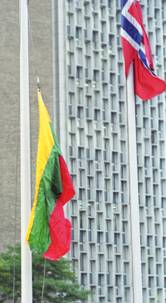
Norway on top,
Lithuania number 41.
The publication’s Economist Intelligence Unit ranked 167 countries and territories in its Democracy Index 2011, placing Lithuania as 41st overall, same as last year.
The report scores countries based on five measures: electoral process and pluralism; civil liberties; the functioning of government; political participation; and political culture.
Based on their scores, countries are placed in one of four different regime categories: full democracies, flawed democracies, hybrid regimes and authoritarian regimes.
Just 25 countries, led by Norway, are considered full democracies, according to the 2011 report. A total of 53 countries, including all three Baltic states, are considered flawed democracies. Hybrid regimes are found in 37 countries, while authoritarianism reigns in 52.
“Much of eastern Europe illustrates the difference between formal and substantive democracy,” according to the report. “The new EU (European Union) members from the region have pretty much equal level of political freedoms and civil liberties as the old developed EU, but lag significantly in political participation and political culture—a reflection of widespread anomie and weaknesses of democratic development.”
The Czech Republic, ranked No. 16, is the only country from Eastern Europe to make it into the top tier of full democracies.
Scandinavia swept the top four spots in the rankings. Norway at No. 1 is followed by Iceland, Denmark and Sweden. The Top 10 full democracies are rounded out by New Zealand, Australia, Switzerland, Canada, Finland and the Netherlands.
The United States ranks 19th, one notch below the United Kingdom.
Among the Baltic states, only Latvia’s ranking improved, rising from 49th in the 2010 index. Estonia dropped a spot from 33rd in 2010 to 34th in 2011. Lithuania, at No. 41, remains unchanged.
Russia ranked 117th, placing it in the list of authoritarian regimes. The announcement in September that Prime Minister Vladimir Putin will again seek the presidency of Russia is “a retrograde and cynical step,” according to the report.
- Bookmark :
- Digg
- del.icio.us
- Stumbleupon
- Redit it
- Posted by - (0) Comment
EUROPE
my home & my castle
Text and photos: Aage Myhre
aage.myhre@VilNews.com
The more I travel around the world the more I realize that I am European. Although I have had good, close friends and have experienced extraordinary things in all corners of the world. Maybe my mind is not sufficiently exotic. That's ok. I have grown older now. Europe does not lose lustre. Driving a car is the best way to experience Europe. Lithuania's border crossings to Latvia and Poland is no problem anymore. Within a day's drive you can reach most of the northern and central European countries. One more day and you can already stand and look out over the warm, slow waves of the Mediterranean Sea...
Over the next few weeks VilNews will present some glimpses of Europe ... A Europe that is now so close to everyone... The Iron Curtain is gone, forever!
|
1 |
|
Exploring Europe |
|
2 |
|
Switzerland & Italy |
|
3 |
|
Along the Riviera |
|
4 |
|
From Strasbourg to London |
|
5 |
|
Austria & Germany |
|
6 |
|
Finland & Scandinavia |
|
7 |
|
En route Warsaw - Budapest |
|
8 |
|
Moscow and further east |
|
9 |
|
The Baltic Hanseatic route |
|
10 |
|
Istanbul |
1 of 10: Exploring Europe
I love old towns. No matter how good a new suburb is. I, and many with me, prefer the old towns. It has something to do with the atmosphere. Details, ornaments. Human life. Sound and smell. Warmth. Joy.
Europe is the 'old town' for the entire world!
I think it primarily is about culture and history. All that Europe is so infinitely rich on. It is something about that feeling. The idea and the knowledge of the Roman Empire every time I'm in Rome. Recognition every time I visit a museum or gallery and see the many art treasures I feel is a part of my European self.
It is more to Europe I never get tired of. For example, being able to walk, touch, feel, smell. Being a tourist here is like walking on the world stage as it has provided the basis for so much over thousands of years. Fortunately, European leaders long ago realized that the human being is more important than cars. Take Strøget in Copenhagen, bike paths in Holland and promenades along pretty much all The Mediterranean sea-coast as good examples of this.
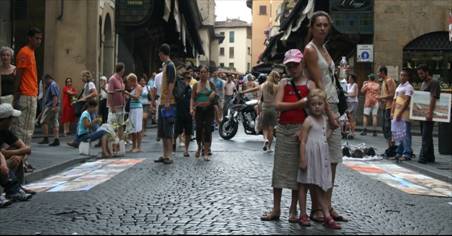
Europe means walking around on cobbled streets. Between historic buildings.
To see. Listen. Experience. Feel. Smell.
- Bookmark :
- Digg
- del.icio.us
- Stumbleupon
- Redit it
- Posted by - (2) Comment
EUROPE
my home & my castle
Text and photos:
Aage Myhre
aage.myhre@VilNews.com
The more I travel around the world the more I realize that I am European. Although I have had good, close friends and have experienced extraordinary things in all corners of the world. Maybe my mind is not sufficiently exotic. That's ok. I have grown older now. Europe does not lose lustre. Driving a car is the best way to experience Europe. Lithuania's border crossings to Latvia and Poland is no problem anymore. Within a day's drive you can reach most of the northern and central European countries. One more day and you can already stand and look out over the warm, slow waves of the Mediterranean Sea...
Over the next few weeks VilNews will present some glimpses of Europe ... A Europe that is now so close to everyone...
The Iron Curtain is gone, forever!
|
1 |
|
Exploring Europe |
|
2 |
|
Switzerland & Italy |
|
3 |
|
Along the Riviera |
|
4 |
|
From Strasbourg to London |
|
5 |
|
Austria & Germany |
|
6 |
|
Finland & Scandinavia |
|
7 |
|
En route Warsaw - Budapest |
|
8 |
|
Moscow and further east |
|
9 |
|
The Baltic Hanseatic route |
|
10 |
|
Istanbul |
1 of 10: Exploring Europe
I love old towns. No matter how good a new suburb is. I, and many with me, prefer the old towns. It has something to do with the atmosphere. Details, ornaments. Human life. Sound and smell. Warmth. Joy.
Europe is the 'old town' for the entire world!
I think it primarily is about culture and history. All that Europe is so infinitely rich on. It is something about that feeling. The idea and the knowledge of the Roman Empire every time I'm in Rome. Recognition every time I visit a museum or gallery and see the many art treasures I feel is a part of my European self. It is more to Europe I never get tired of. For example, being able to walk, touch, feel, smell. Being a tourist here is like walking on the world stage as it has provided the basis for so much over thousands of years. Fortunately, European leaders long ago realized that the human being is more important than cars. Take Strøget in Copenhagen, bike paths in Holland and promenades along pretty much all The Mediterranean sea-coast as good examples of this.

Europe means walking around on cobbled streets. Between historic buildings.
To see. Listen. Experience. Feel. Smell.
- Bookmark :
- Digg
- del.icio.us
- Stumbleupon
- Redit it
Lithuania still planning to adopt euro in 2014
- Posted by - (0) Comment
![]()

Lithuania is still determined to introduce the embattled euro currency in two years, a government official said Tuesday, despite skepticism by the Baltic country's president.
The center-right government was doing everything possible to join the eurozone in 2014, its previously stated goal, said Virgis Valentinavicius, an adviser to Prime Minister Andrius Kubilius.
"The most important thing are stable finances" to meet the standards of the EU "and the prime minister is sure that our country will meet them," said Valentinavicius.
"We can only hope that EU will solve the problems of common currency by that time," he added.
However, in an interview published Monday in the Veidas magazine, President Dalia Grybauskaite expressed doubt that Lithuania would be ready, saying "2014 was unrealistic." She did not elaborate.
- Bookmark :
- Digg
- del.icio.us
- Stumbleupon
- Redit it
- Posted by - (0) Comment
Olga Zabludoff: Reply to Donatas Januta re Holocaust in Lithuania
. . . it was the “lucky Jews” who were deported [to Siberia] since they accounted for many of the survivors. . . . Jews could not return from the mass graves.

Olga Zabludoff
Dear Donatas,
I send New Year greetings to you and your family.
In response to your article of 20th December, 2011, I regret to tell you that your lengthy sermon on serfdom was irrelevant to our discussion. Let me remind you that from its onset this debate has been rooted in modern Lithuanian history. It has been labeled a discussion on “Holocaust in Lithuania” and has frequently traveled into the arena of current Lithuanian-Jewish issues and attempts at reconciliation.
- Bookmark :
- Digg
- del.icio.us
- Stumbleupon
- Redit it
Re: Article by Dr. Irena Veisaite
- Posted by - (0) Comment
Dear Editor,
The recent article by Dr. Irena Veisaite agreeing with the antisemitic establishment's evaluation of the life's work of Dr. Efraim Zuroff, Director of the Simon Wiesenthal Center's Israel office and a leading historian of the Lithuanian Holocaust, has been a cause of great dismay to us, the world's last active organization of Lithuanian Holocaust survivors and their descendants.
- Bookmark :
- Digg
- del.icio.us
- Stumbleupon
- Redit it
- Posted by - (2) Comment
Olga Zabludoff: Reply to Donatas Januta re Holocaust in Lithuania
. . . it was the “lucky Jews” who were deported [to Siberia] since they accounted for many of the survivors. . . . Jews could not return from the mass graves.
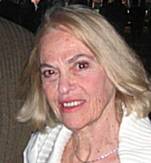
Olga Zabludoff
Dear Donatas,
I send New Year greetings to you and your family.
In response to your article of 20th December, 2011, I regret to tell you that your lengthy sermon on serfdom was irrelevant to our discussion. Let me remind you that from its onset this debate has been rooted in modern Lithuanian history. It has been labeled a discussion on “Holocaust in Lithuania” and has frequently traveled into the arena of current Lithuanian-Jewish issues and attempts at reconciliation.
I have tried to play by the rules and have told you time and again that I find it difficult to relate to medieval times in Lithuania or even to the period of the Grand Duchy of Lithuania – given the time frame of our topic. (Sure, sometimes one makes a reference to an earlier period but almost as a simple footnote.) So when I asked: “When were the Lithuanian people not allowed to have a hand in their country’s economy or barred from any particular occupations?” I was clearly not referring to the 18th century when most Lithuanians were indeed peasant serfs. I was talking about the period of Independent Lithuania (the interwar years), the era on which our debate is focused. Your digression into the earlier centuries makes about as much sense as if I would have cried to you that my Jewish ancestors had been Pharaoh’s slaves in Egypt.
In one of my earliest responses to you I claimed that you twist your facts and figures to suit your arguments. Actually you go further than that. You constantly resort to periods in Lithuanian history that have little or no connection to our theme. Is this in order to deflect or distract from issues you would rather not address? You corrupt history by telling only half the story. For instance, in your 24th November, 2011 article, “Litvaks: Lithuania’s Warriors,” you state openly that Lithuanian Jews were a force in helping win an Independent Lithuania, fighting and dying alongside their Lithuanian brethren. In turn, the Jews were rewarded with rights and privileges for their participation in achieving their country’s freedom. But at that point you stop short, obviously preferring to omit the rest of the story:
After a few years of this “Golden Age,” all Jewish rights and privileges were harshly revoked, and the darkest period in the history of Lithuania’s Jews began to germinate: “Lithuania for Lithuanians!” Jewish signs on businesses had to be removed. Then they lost their businesses, their homes. Vitriolic Nazi propaganda was embraced in Lithuania. We all know the end . . .
Like an insidious drum beat you recycle and recycle your party line: Jews contributed “zilch” to the Lithuanian economy. Jews created a monopoly in the marketplace. Jews played no role in Lithuanian culture. Jews kept themselves distinct from the Lithuanians among whom they lived. Jews did not invite Lithuanians to dance with them. Jews did not communicate with Lithuanians in the same language. Jews did not worship the Lithuanian religion. Jews had separate schools and dressed differently from Lithuanians. Jews did not intermix with Lithuanians except in the marketplace. Their Litvak culture was totally separate and distinct from the ethnic Lithuanian culture.
In other words, you are chastising the Lithuanian Jews for not being ethnic Lithuanians. You are leading up in cunning fashion to the Nazi-inspired rhetoric that the Jews themselves were responsible for what happened to them, and that they deserved their fate. This is a devious Nationalist strategy to incite hatred and to rid Lithuania of guilt. And of course there is the eternal echo in your arguments that the Lithuanians were the victims of the controlling Jews. This is another diabolical tactic to reverse the roles of perpetrator and victim.
A prominent historian in the UK (a non-Jew) wrote me recently: “The double genocide argument is so fraudulent. Of course the word ‘genocide’ cannot be used exclusively for the Holocaust: there are other genocides as well. But the evidence set out clearly indicates that there was no such extermination of the Lithuanians – terrible suffering, yes, but not a genocide. You don’t have to look far for the reasons (not the reasoning) for the argument. It helps to reduce the sense of guilt. So instead of saying ‘Weren’t we terrible,’ they say, ‘We all suffered together.’ Which in turn reduces the need for a complete realignment of sensibility.”
I have read recent pieces in VilNews concerning the Soviet deportations of Lithuanians to Siberia. Among the responses to the articles are many which confirm that the deportees eventually returned to their home country – not all, but many. It is also important for readers to realize that the Soviets did not spare Lithuanian Jews from being deported to Siberia along with non-Jews. In fact, it was the “lucky Jews” who were deported since they accounted for a good number of survivors. Brutal as were the conditions of the deportees, the population statistics tell us that by 1951 more than 90% of non-Jewish Lithuanians had survived, after which year the population began to climb. In sharp contrast less than 5% of the pre-war Lithuanian-Jewish population remained alive at the close of 1941. Jews could not return from mass graves. The annihilation of more than 95% defines a true genocide.
Donatas, I don’t believe we have made progress, however hard we may have tried. I cannot and do not want to keep repeating myself in reply to your cyclical charges of red herrings, Jewish monopolies, Jewishness, Zuroff & Co., and one-way streets. It is like a jingle you have created. We will not convince one another. I find it unfortunate that a man of your education has a distorted view of the very same facts that other educated Lithuanians or Lithuanian-Americans or historians in general see as historical truth. The seeds of reconciliation are probably sprouting in the minds and hearts of young educated Lithuanians who are able to confront their nation’s past with clarity and whose visions for their country’s future are not clouded by present-day Nationalist politics.
In closing, I wish you would read the articles I have linked below.
http://defendinghistory.com/wyman-brent-founder-of-vilnius-jewish-library-assures-supporters-of-library%E2%80%99s-integrity/20396- Bookmark :
- Digg
- del.icio.us
- Stumbleupon
- Redit it
VilNews e-magazine is published in Vilnius, Lithuania. Editor-in-Chief: Mr. Aage Myhre. Inquires to the editors: editor@VilNews.com.
Code of Ethics: See Section 2 – about VilNews. VilNews is not responsible for content on external links/web pages.
HOW TO ADVERTISE IN VILNEWS.
All content is copyrighted © 2011. UAB ‘VilNews’.

 Click on the buttons to open and read each of VilNews' 18 sub-sections
Click on the buttons to open and read each of VilNews' 18 sub-sections 





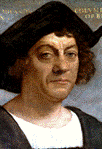













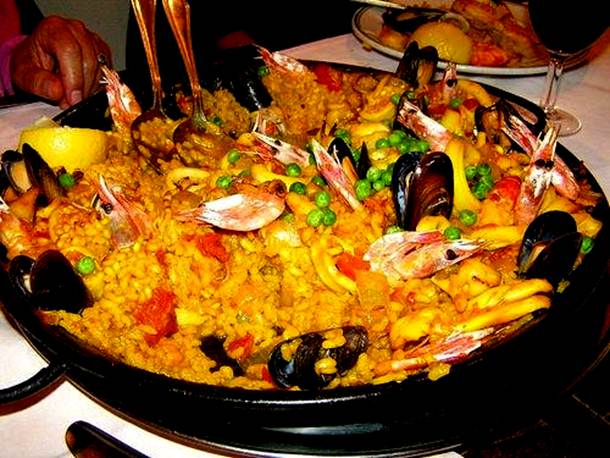

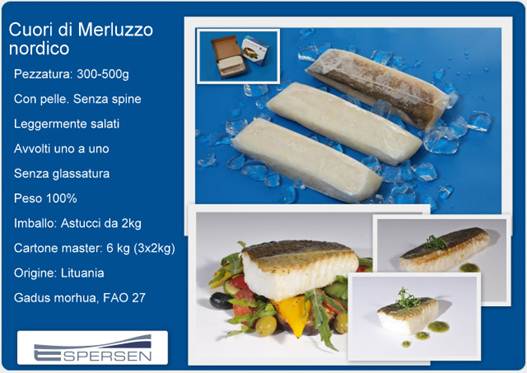

























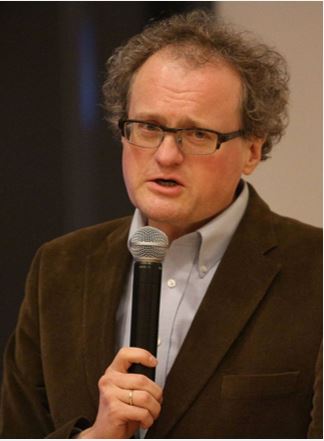

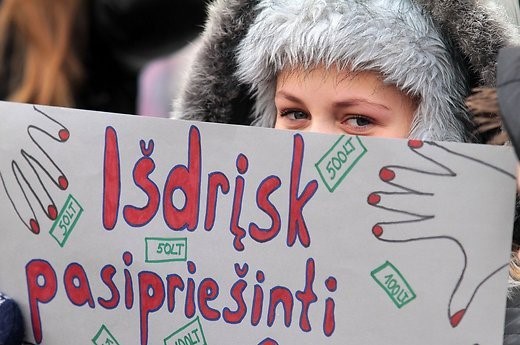


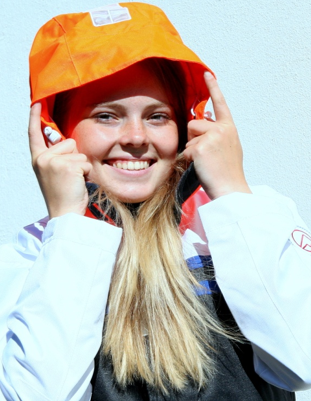
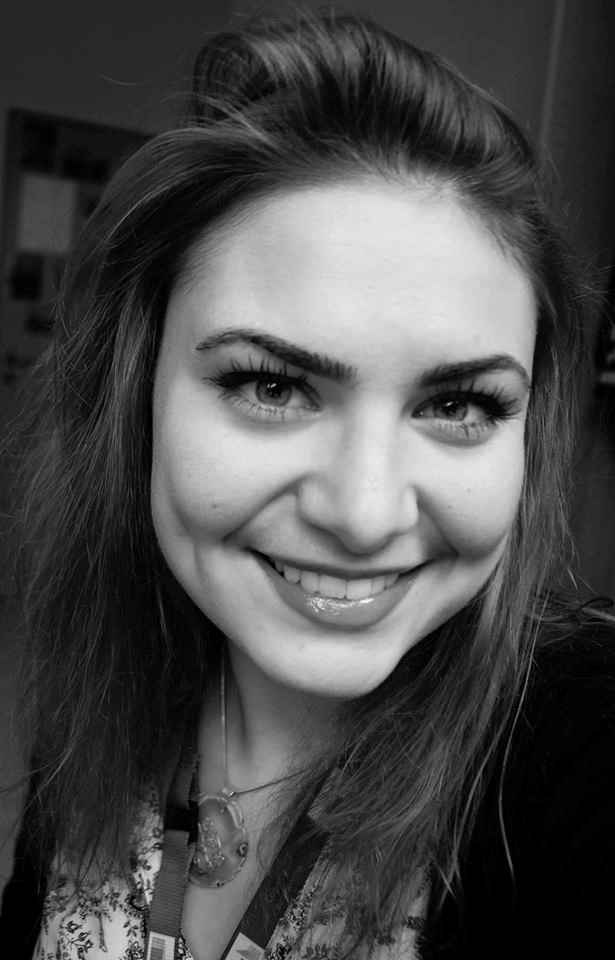

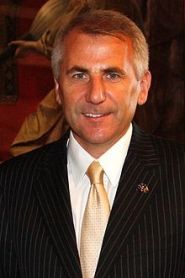
.jpg)
